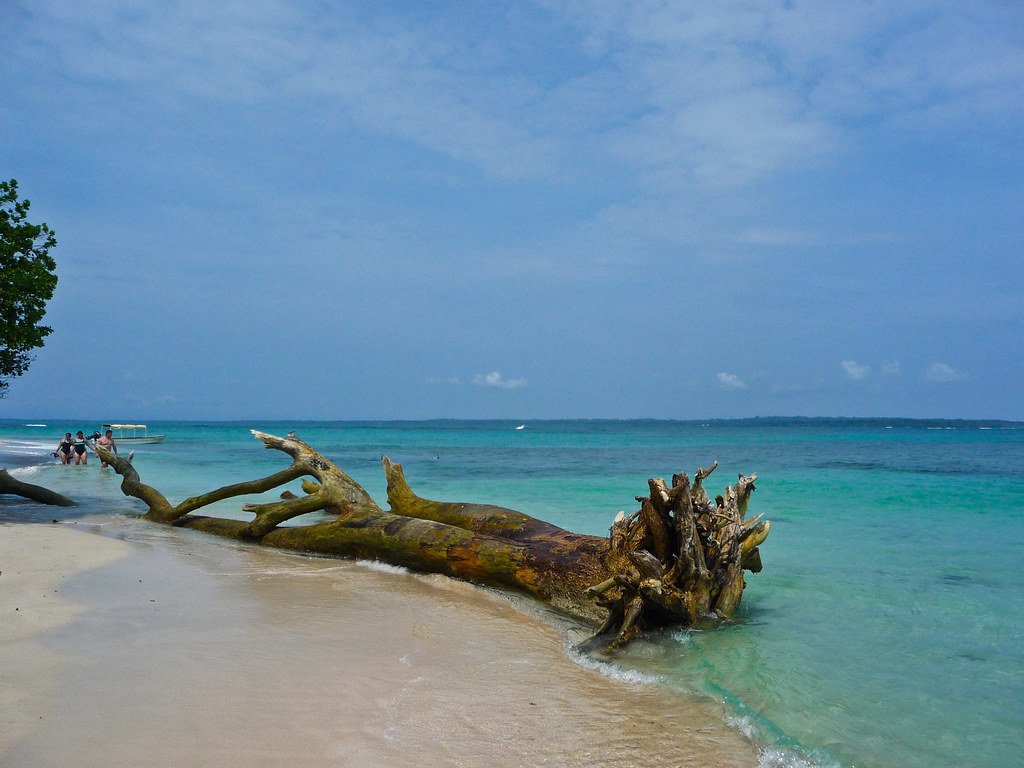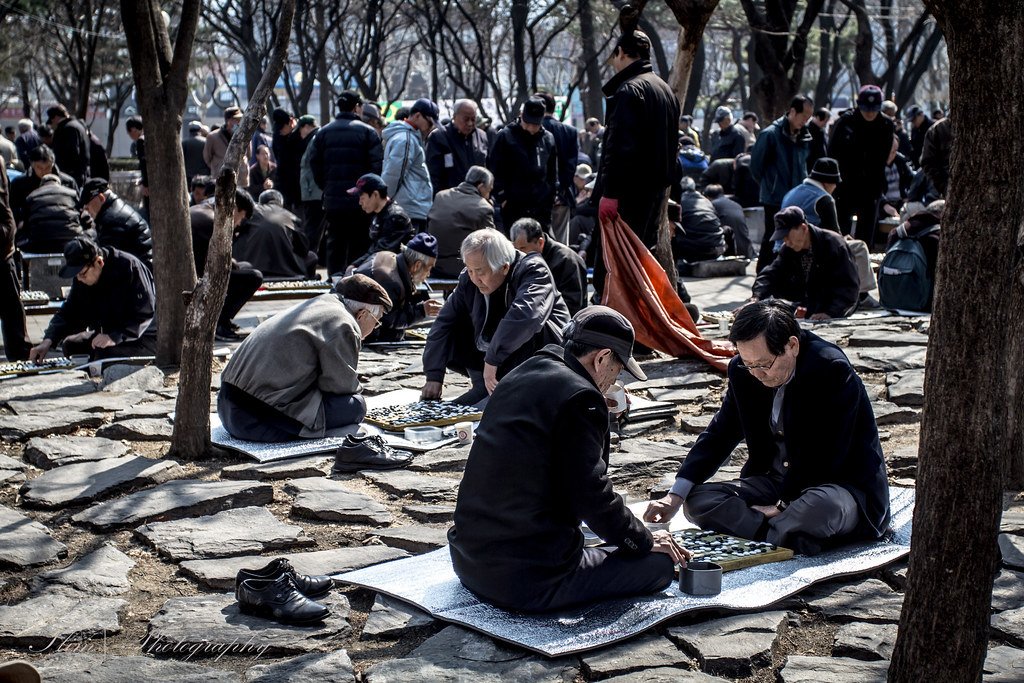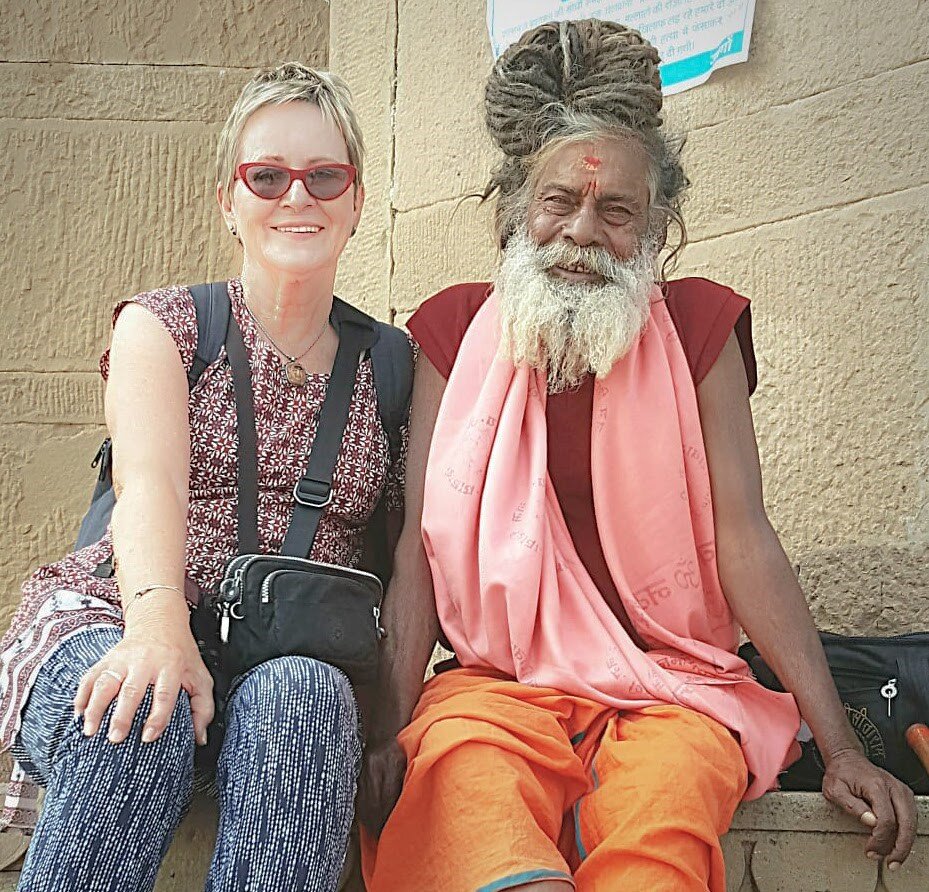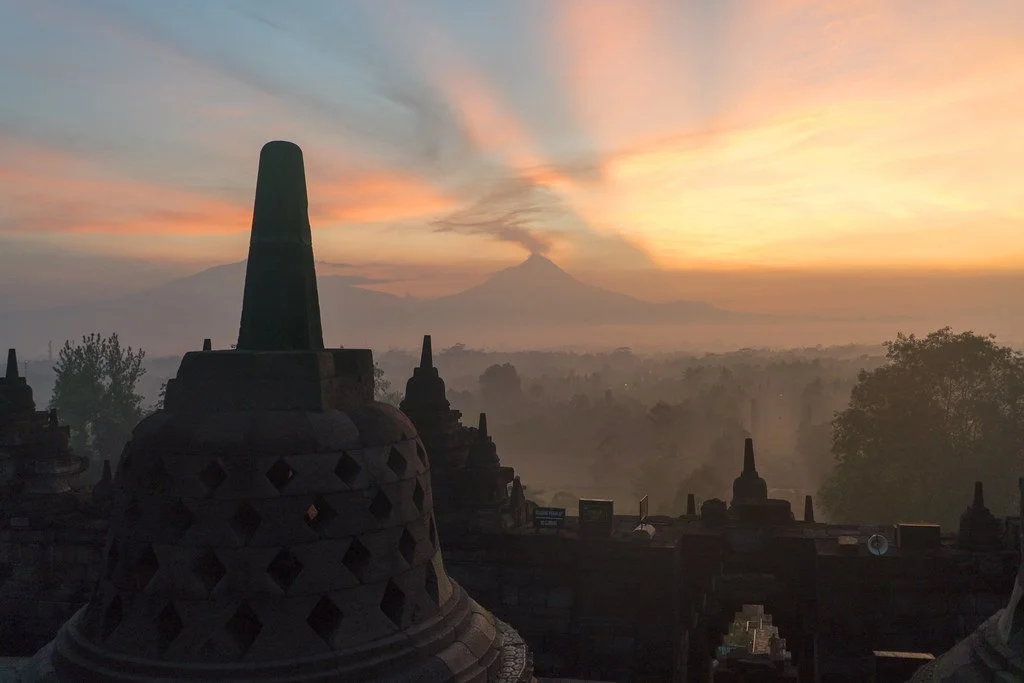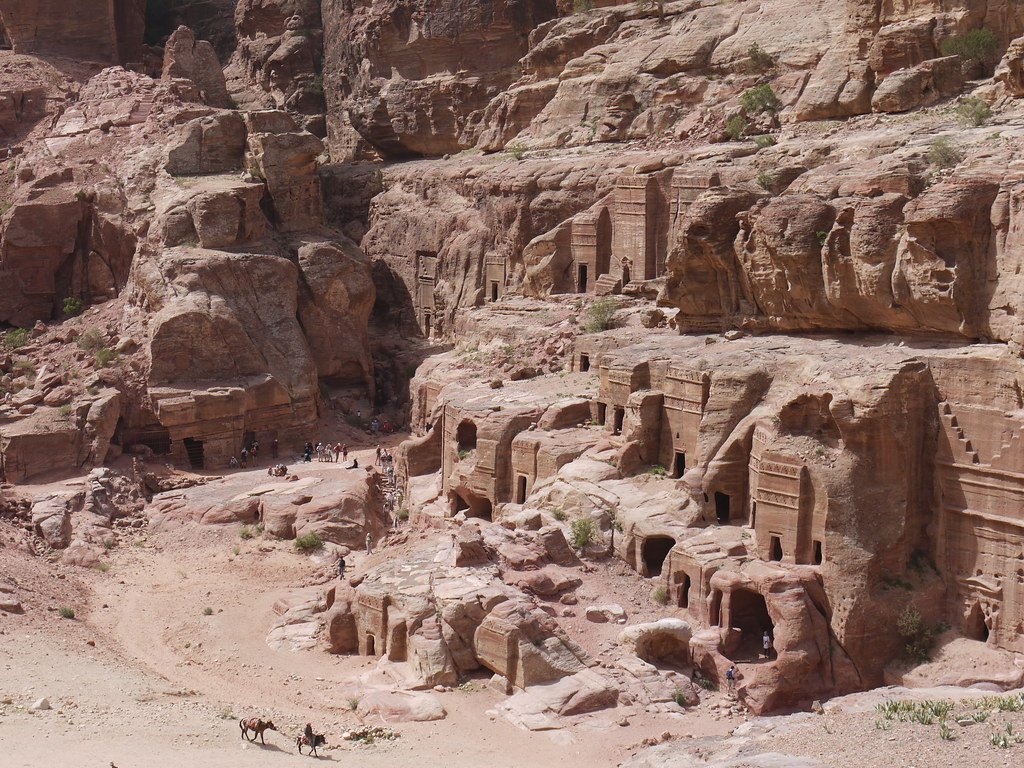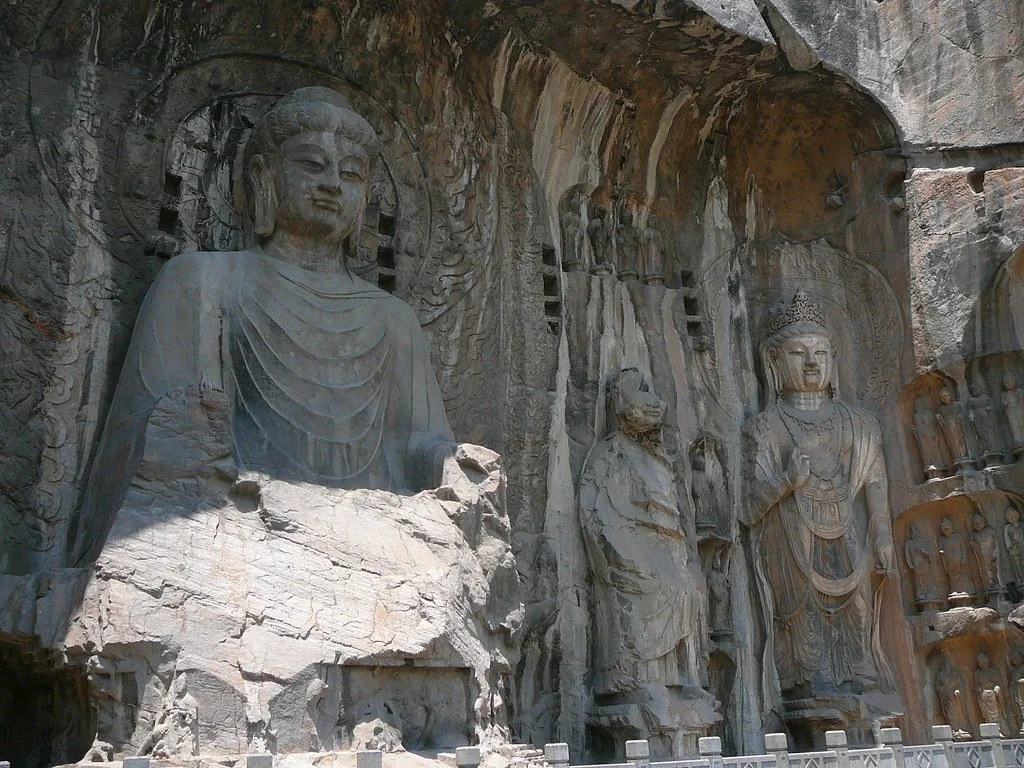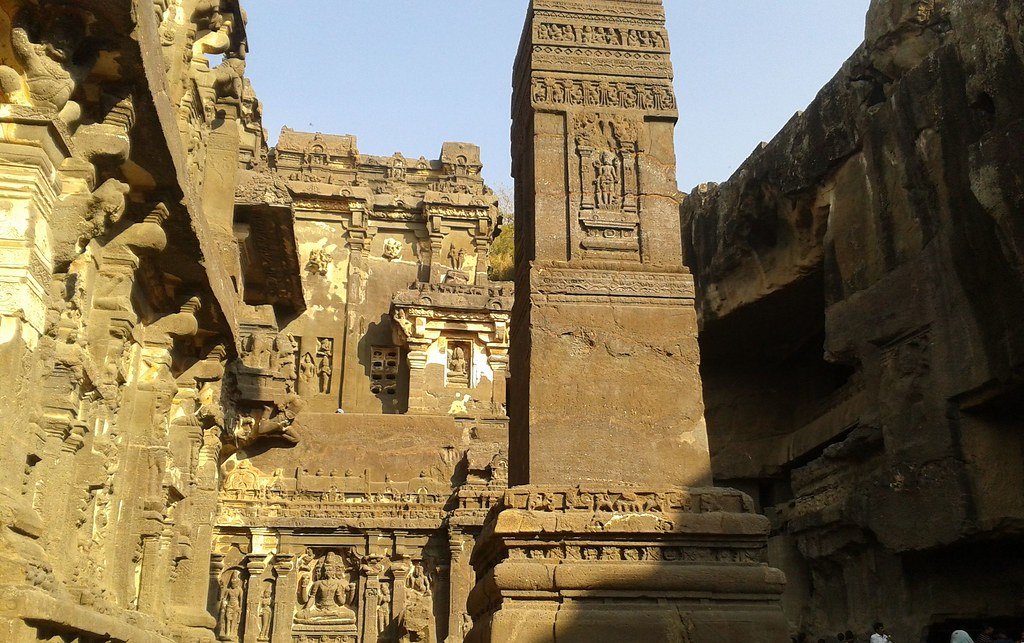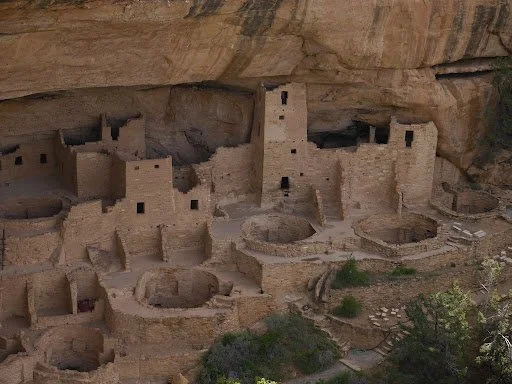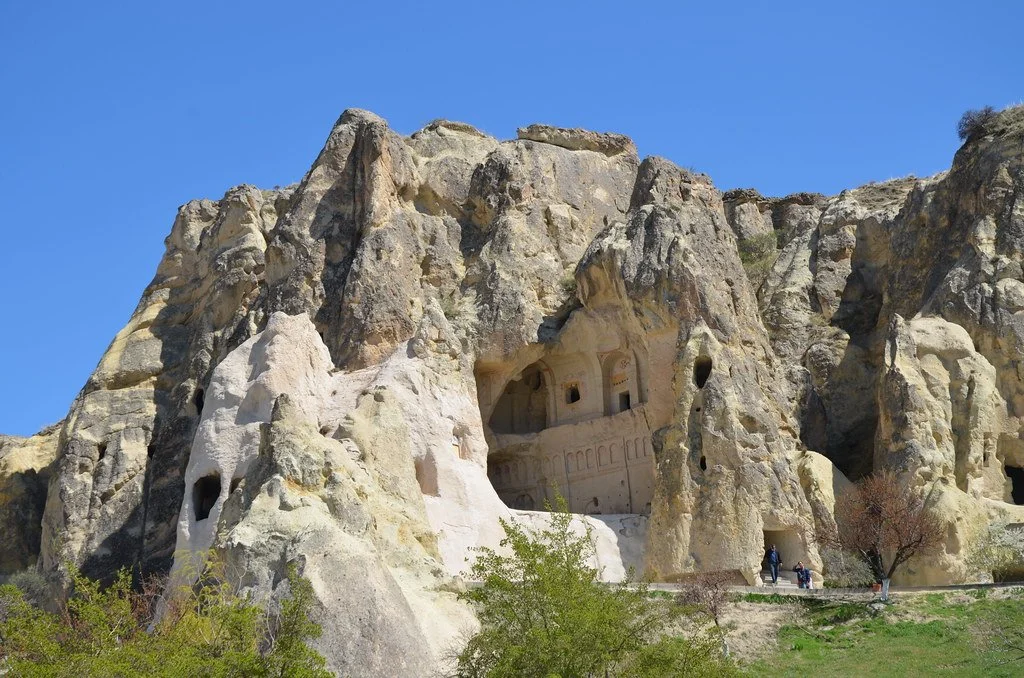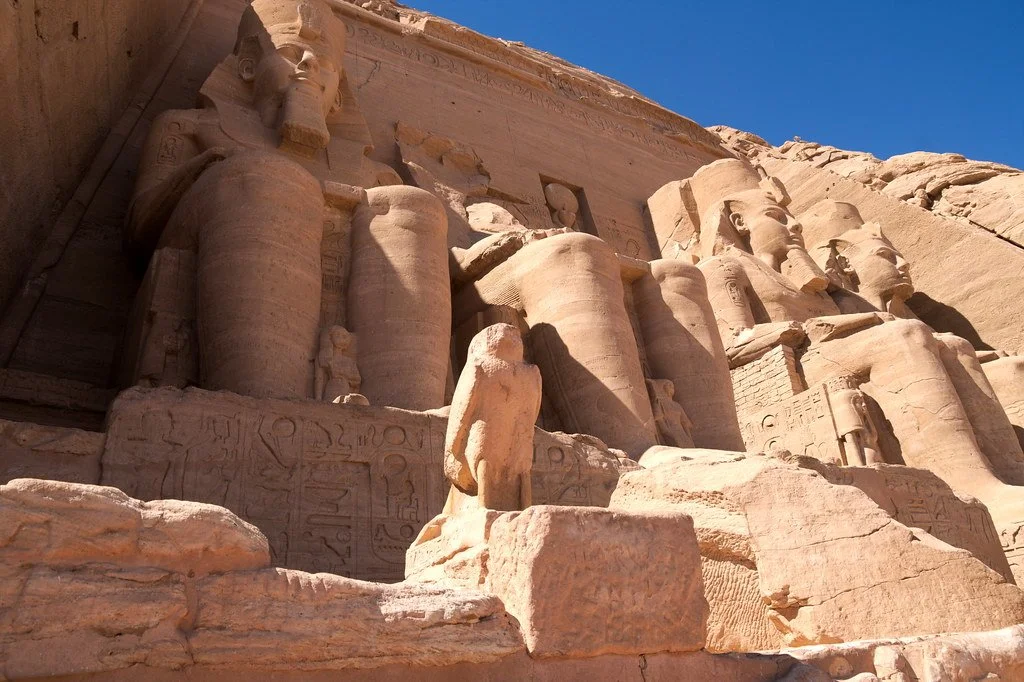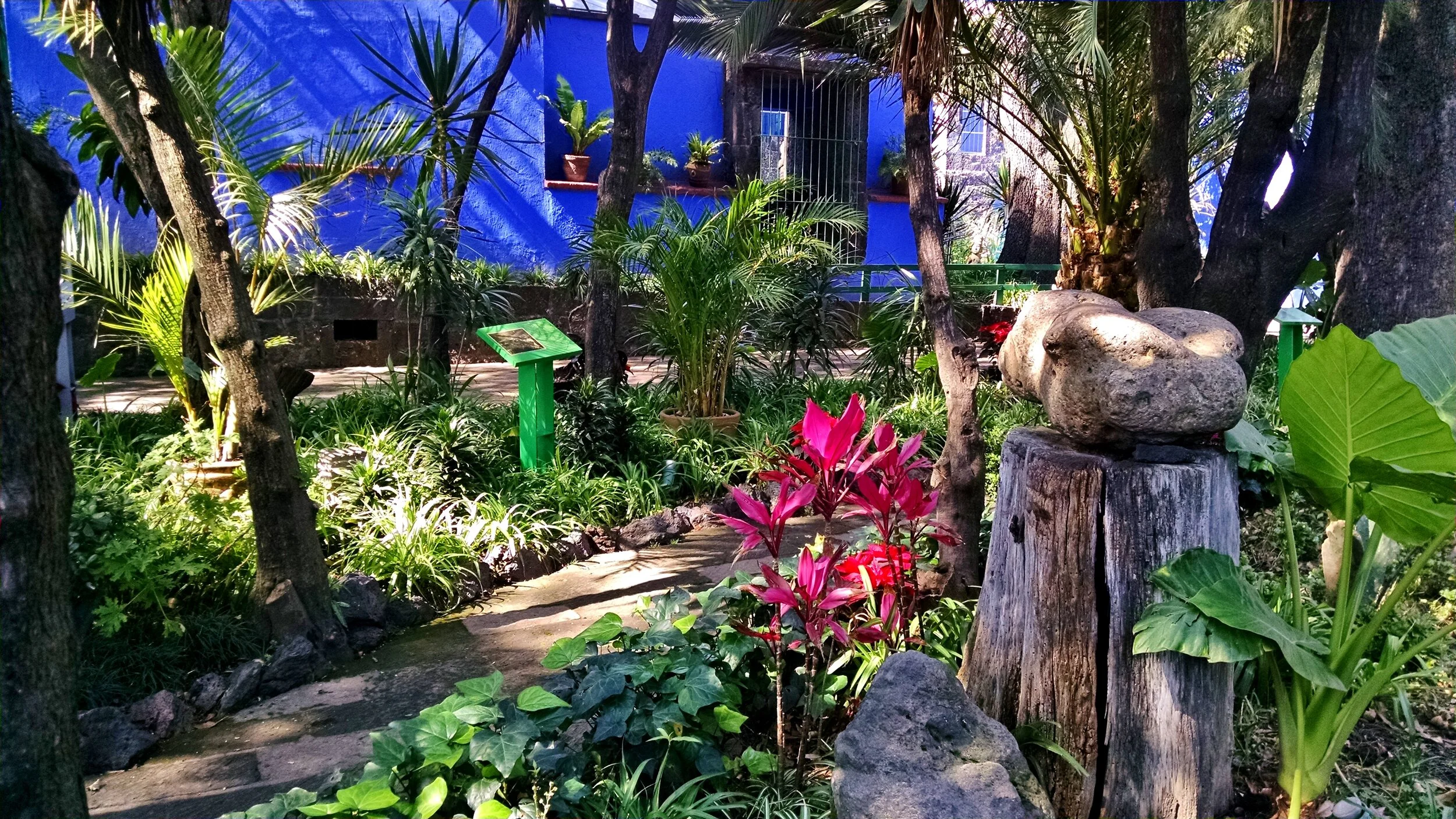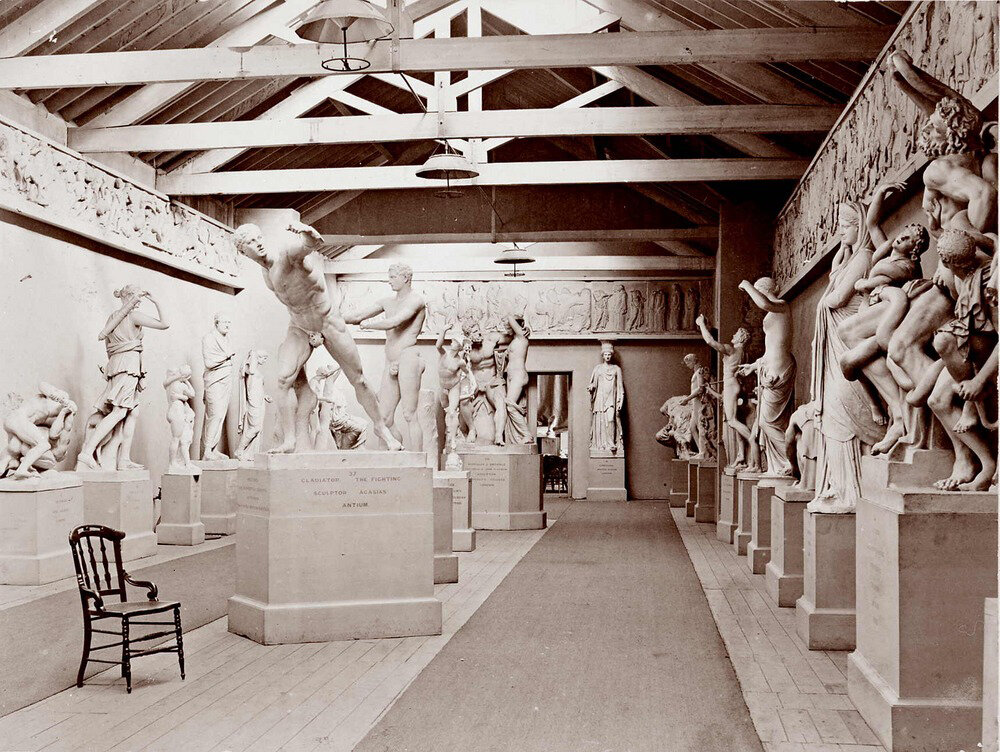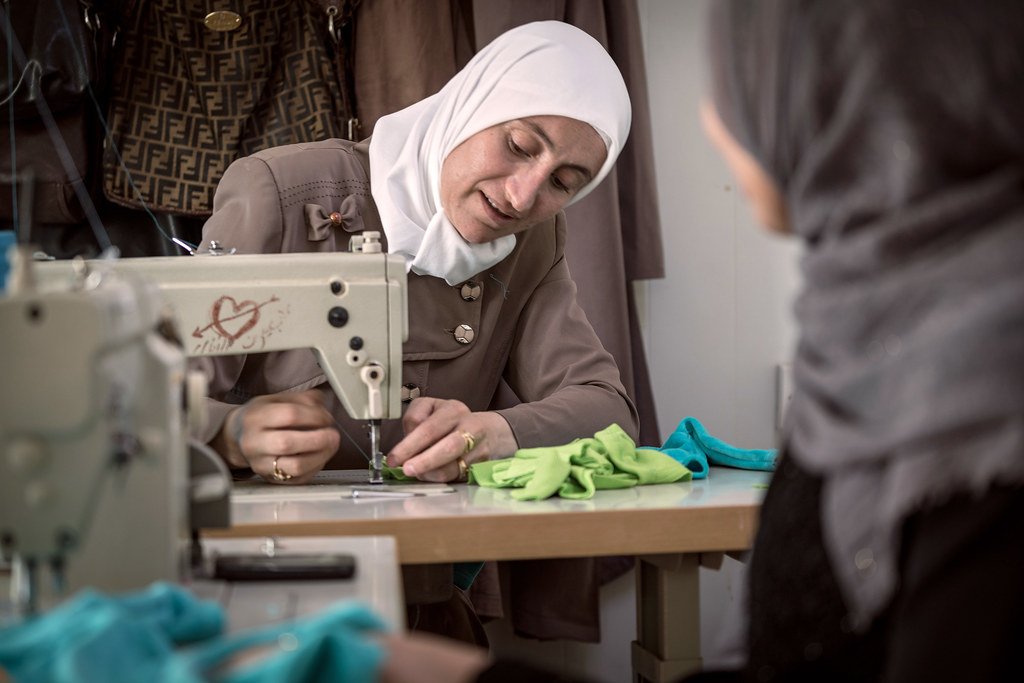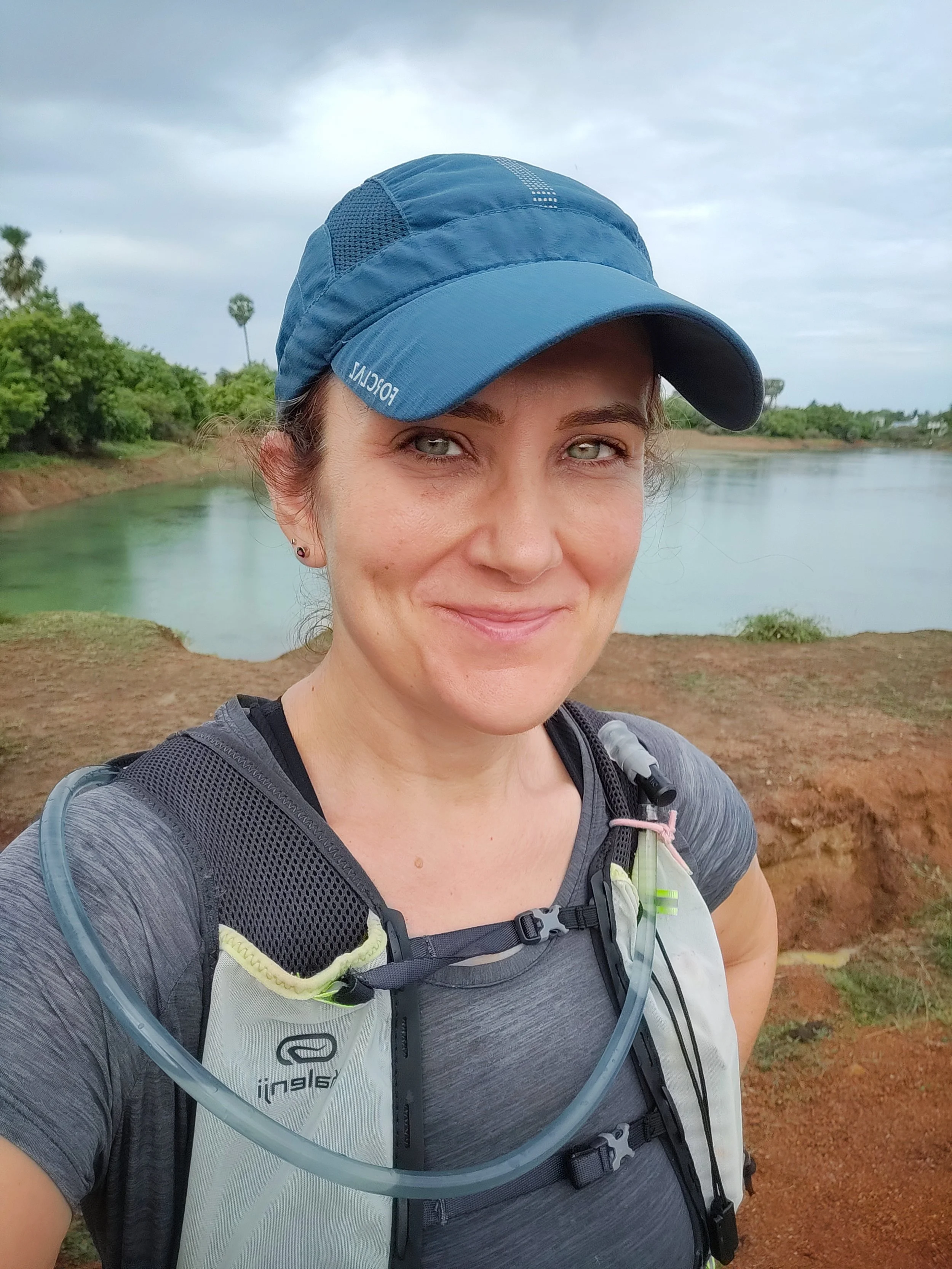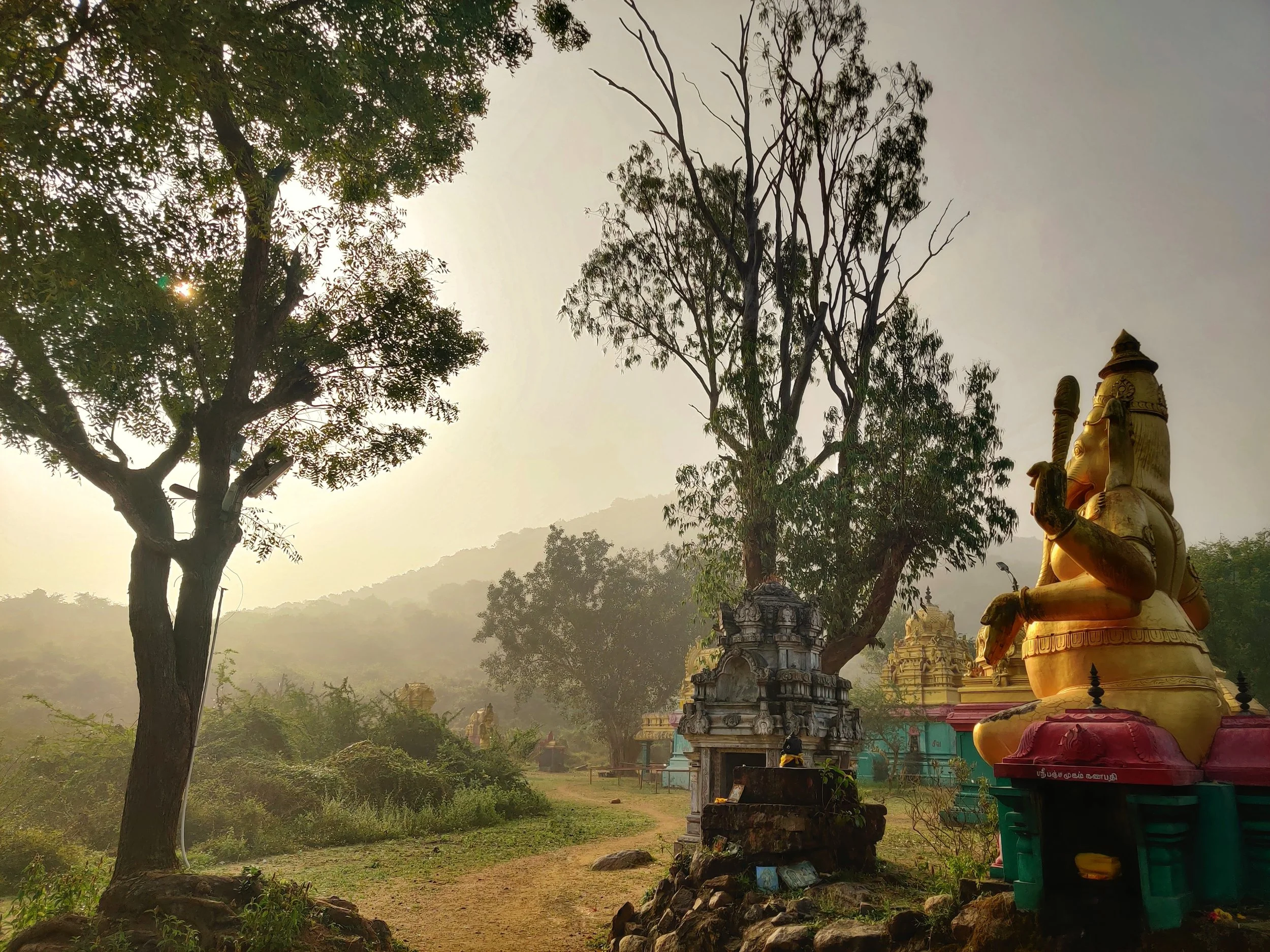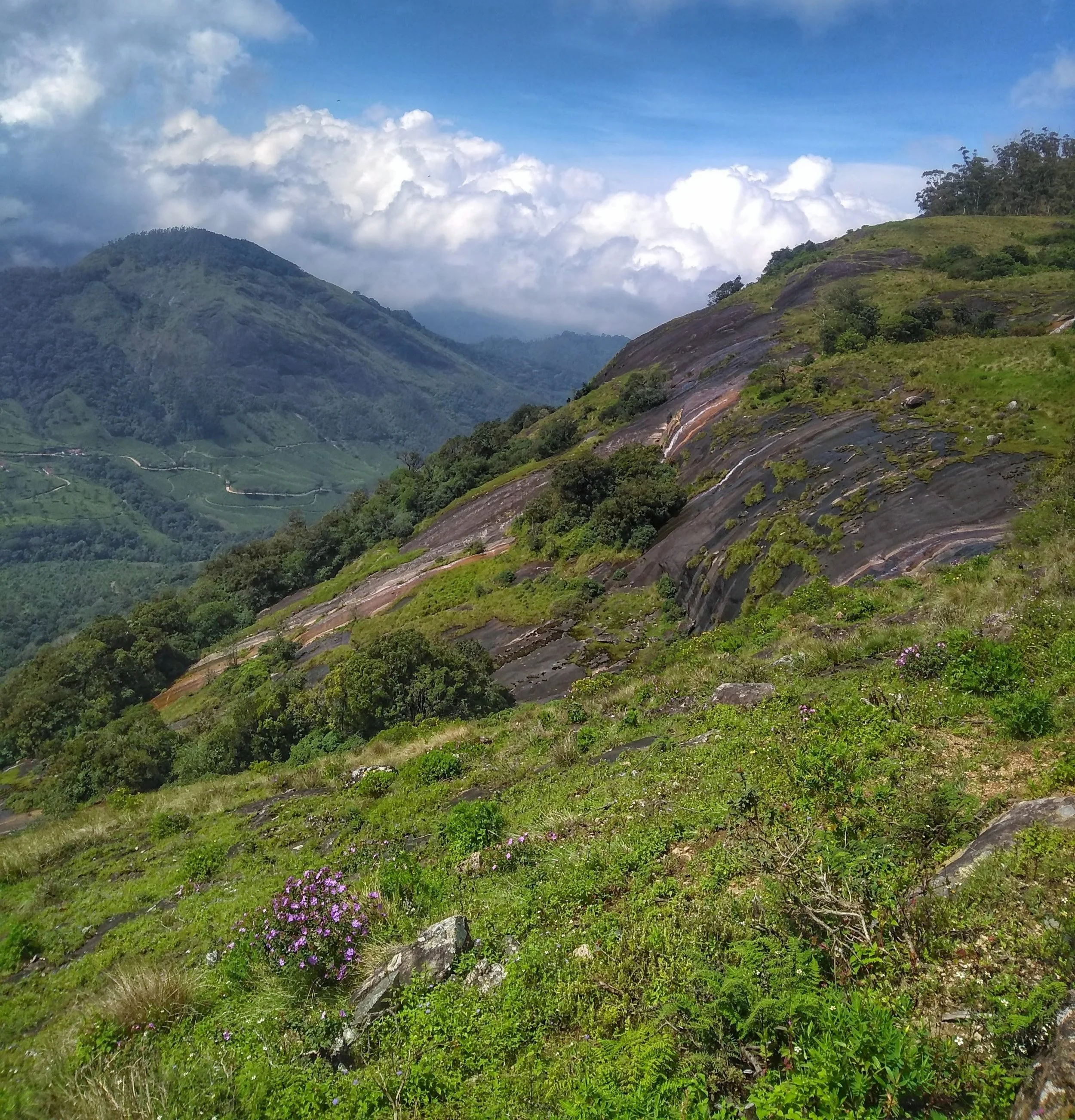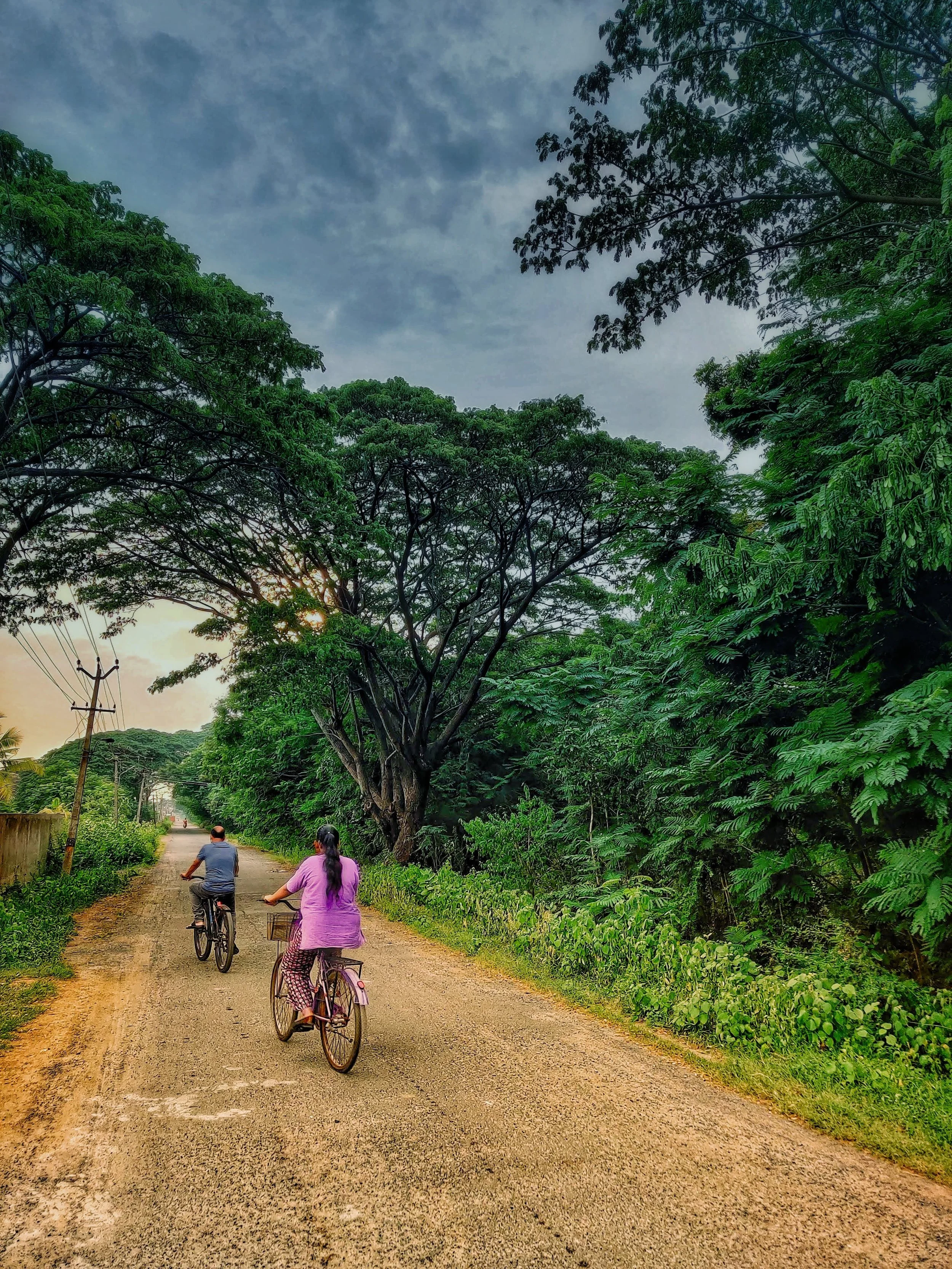Set to a mesmerizing soundtrack, this footage of Cambodia highlights the natural beauty of the country’s tropical landscape, as well as provides insight into the daily lives of its people. As viewers, we travel from surrene Angkor Wat—the world famous Buddhist temple complex—to Phnom Penh, Cambodia’s lively and bustling capital city. German director Vincent Urban, who is from Munich now based in New York City, concludes the episode teasing his next stop, Thailand, for the following installment of his series: “In Asia.”
VIDEO: Graffiti Art vs. Domestic Violence in Brazil
In Brazil, domestic violence endangers the lives and limits the aspirations of women across all age groups. One woman—Panmela Castro of Rio de Janeiro—has crafted a unique approach to speak out against the abuse she has witnessed her mother, aunts and friends experience, as well as experienced herself. By producing inspiring graffiti art with others who have survived or witnessed domestic abuse, Castro has united women in a common cause: to break the silence on domestic violence and protest its normalization. She is now the president of the Nami Network, an organization which promotes women’s rights through graffiti. Castro’s project has spread to Peru and neighboring countries, and she was named one of the 150 women who have shaken the world by Newsweek.
The San Blas Islands, Panama. Whl.travel. BY-NC-SA 2.0
8 Central American Islands You May Have Never Heard Of
Known mostly to locals and frequented by few travelers, these islands have an expansive amount of marine life and culture. This list includes islands in Belize, Honduras, Costa Rica, Nicaragua and Panama.
1. Glover’s Reef Atoll
Belize
Opened to only a few visitors at a time, this 9-acre island is surrounded by Glover’s Reef—a 90 square mile stretch of reef made up of 700 individual patch reefs in a lagoon. This reef is thought to be the richest marine environment in the Caribbean Sea. There are many things to do on the island, such as kayaking, snorkeling, attending a yoga retreat or just relaxing. Once frequented by pirates, this protected marine reserve has been a designated World Heritage Site since 1996.
2. Isla del Caño
Costa Rica
Isla del Caño, Costa Rica. Chris Varley. CC BY-NC 2.0
During pre-Columbian times, this island was a cemetery and home to Indigenous cultures. Located just 10 miles off the Osa Peninsula, it is a protected biological reserve surrounded by five platforms of low coral reefs. It is also home to an abundance of marine life, including sharks, whale sharks, dolphins, moray eels, sting rays and a variety of tropical reef fish. There are no hotels or guesthouses on the island; staying overnight is not allowed.. There are many tours available right outside of the Ballena Marine National Park. Your day trip or overnight stay can begin at the Osa Peninsula, Uvita or Sierpe.
3. Hog Islands
Honduras
Cayos Cochinos a.k.a Hog Islands, Honduras. Bodoluy. CC BY-NC-SA 2.0
Off of the northern mainland coast of La Ceiba in Honduras lie the Hog Islands, known in Spanish as Cayos Cochinos. They consist of two small islands and 13 tiny sand cays. It’s inhabited by the Garifuna people, and they are the only ones allowed to fish the waters. The islands are managed by the Cayos Cochinos Foundation; they work in unison with the Honduran government and the Garifuna people to preserve the water’s health. The smaller of the two islands is used exclusively as a center for scientific investigation. Cayos Cochinos is a Marine Protected Area (MPA), which includes part of the world's second largest coral reef system known as the Mesoamerican Barrier Reef.
4. Isla Guadalupe
Mexico's Baja Peninsula
Isla Guadalupe. StJenna. CC BY-NC 2.0
The remote volcanic island of Isla Guadalupe, which is Spanish for Guadalupe Island, is located off the west coast of Mexico’s Baja Peninsula. The island is home to elephant seals and Guadalupe seals and is inhabited by scientists, military personnel operating a weather station and a small group of seasonal fishermen. The waters surrounding Isla Guadalupe drive experienced divers to take in the views of underwater life; it is known to consistently outperform South Africa and Australia with shark-seeing consistency. The diving tours leave the ports of Ensenada and San Diego and last on average five days.
5. Isla Ometepe
Nicaragua
Isla Ometepe Sunset. Katie Laird. CC BY-NC-SA 2.0
Located southwest of Lake Nicaragua, Isla Ometepe is home to twin volcanoes: Concepción and Maderas. The island is inhabited with dense forests, natural springs, lake views and hiking trails. There are also diverse plant and animal species, including white-headed capuchins, yellow-naped Parrots and guayabón fruit trees. The island is visited by backpackers and nature seeking enthusiasts, with locals sharing that more eco-tourists are arriving. The best time to visit is during the dry season, which runs from November to April. In the dry season, the butterfly garden is open in Charco Verde, the ecological reserve.
6. Little Corn Island
Nicaragua
Little Corn is the smallest of the Corn Islands off Nicaragua’s Caribbean coast. Once ruled by the British, this remote island produces coconut oil, lobsters and shrimp and is inhabited by roughly 850 people. There are no cars, golf carts, motorcycles or an airport. Seeing the island is possible, but requires two or more connection flights, as well as a 30-minute boat ride from Bluefields, Nicaragua. It’s visited by many who enjoy diving due to the hundreds of dive spots that surround the island. Featuring cheap dining prices, a beer on the island is less than a dollar, and a fresh caught lobster dinner is on average $12.
7. Islas Zapatillas
Panama
Isla Zapatilla. Michael McCullough. CC BY 2.0
Islas Zapatillas or Little Shoes Cays (named for their resemblance to footprints) are two small islands in Bocas del Toro, Panama. The islands are inhabited by sloths and protected by the Bastimentos National Marine Park. Islas Zapatillas are important ecological sites for the endangered hawksbill sea turtles that nest on their shores. You can explore the island through a tour or by charting a private boat to have a more intimate experience. The island is uninhabited, so making sure you have enough water, food, sunscreen and all other necessities is key to enjoying yourself here.
8. San Blas Islands
Panama
San Blas, Panama. Rita Willaert. CC BY-NC 2.0
The San Blas Islands are located in the Caribbean Sea off the coast of Panama. The Kuna Tribe of Panama inhabit the islands and have strictly controlled development and tourism here. All of the money spent on the islands falls directly into the hands of the Kuna Community. Day trips are available, but if staying overnight is an option you’d like to explore, palm-thatched cabins with a sand floor are available. They also offer overwater bungalows or even options for camping. There are visitors who decide to experience the Kuna lifestyle and culture; in those cases, they organize to stay in a dorm of a Kuna family. The island is filled with water activities and scenic views. However, researchers claim that the islands are at risk of disappearing in a matter of decades due to erosion and poor resource management.
Jennifer is a Communications Studies graduate based in Los Angeles. She grew up traveling with her dad and that is where her love for travel stems from. You can find her serving the community at her church, Fearless LA or planning her next trip overseas. She hopes to be involved in international humanitarian work one day.
The Maasai Spirit
This series of images was taken while on assignment in the Maasai Mara Game Reserve in Kenya.


















As we were leaving the reserve one day our driver suggested we stop at a nearby Maasai village. I thought it would be just a quick stop and a chance to pickup some handmade souvenirs.
Knowing that the Maasai depend on tourists to supplement their subsistence farming, I didn't expect the warmth of our welcome and the genuine dialogue I would have with the chief. He introduced us to the village, showing every aspect of their daily life. Speaking passionately about the realities confronting the Maasai people and the hard choices they must make in order to preserve their cultural identity — from environmental issues threatening their homes and grazing lands, exposure to tourists and the lure of modern life.
He was an erudite speaker, having mastered English and more than 6 African languages. This worldliness empowered him to make mindful decisions governing the collective future of his tribe. All the while recognizing the hypocrisies of a developed worlds existence. In his village no one went hungry, loneliness and depression did not exist and the elders were a revered and integral part of the social dynamic.
He encouraged me to take photos, wanting to share their simple but dignified life, beautiful aesthetic and overt happiness. I hope these images honor the chief's wishes and convey some of the Maasai spirit.
RELATED CONTENT:
Julien Campeil
Julien is an Australian born photographer living in New York. His work has appeared in many publications worldwide including Vogue, GQ and Conde Nast Traveler.
You can view more of his work online at: www.juliencapmeil.com
For print purchases Email: info@juliencapmeil.com
Half of South Korean Elderly Are Living in Extreme Poverty
The pension retirees receive is only a quarter of the amount needed for single households, causing many elderly to return to work.
Elderly South Korean woman. Mctrent. CC BY-NC 2.0
South Korea is known for high rise buildings, luxury skin care and high tech devices. Yet with all of these advances, it has the worst senior poverty rate among developed nations. The population has been struggling to stay off the streets with only 35% of seniors receiving a monthly pension. Fewer than half of seniors receive government assistance and it is only a quarter of the amount needed to cover basic necessities.
The Confucian tradition of children taking care of their parents is fading in South Korea. In previous generations the elderly turned to their children for financial assistance, often living with their children until their passing. However, the Census has shown that one in three Korean seniors live alone today and six out of ten elderly are supporting themselves. It has become difficult for children to help aging parents due to the expensive cost of living and the high unemployment rate. The country’s legal retirement age is 60, but many employees at private companies are pressured to leave around age 50 due to scarce executive or high-ranking jobs. When they retire at such a young age, they realize their pensions or severance packages are far below the cost of living and that the social safety net is insufficient. They are forced to re-enter the working world, but often in positions that are temporary or day-to-day, offering very low pay.
Retiree collecting cardboard boxes. Mariej55quebec. CC PDM 1.0
In order to make a living, many retirees collect anything that can be recycled and transported to the local junk yard using makeshift handcarts. Cardboard boxes are what they tend to collect most because they are the easiest to come across. Although prices vary, the average income per kilogram (2.2 lbs.) is 40 won ($0.33). On a 12 hour day, retirees earn about $6.68: a salary that’s far below the poverty line. South Korea is expected to become a “super-aged society” with more than 20% of its population aged 65 years and older by 2026. A fall in the fertility rate and rising longevity are the two fundamental contributors to the country’s growing ageing population.
Pre-pandemic, soup kitchens were a social gathering place for many retirees. A popular one among the elderly was Angel Soup Kitchen. On average, they served more than 350 free meals three times a week: operating 26 centers across South Korea. Retirees would line up in the early hours of the day to guarantee a spot in line. It was a place where they could be among other seniors enjoying a meal. However, with the pandemic and the elderly being the most vulnerable, Angel Soup Kitchen closed and now distributes take home meals. With so many soup kitchens closing, Warm Chaeumteo was one of the few that remained open. They provide three meals a day, seven days a week. Due to the temporary closure of other soup kitchens, the center is getting approximately 100 more visitors a day, compared with the normal turnout before the outbreak. They receive just under 1,000 people per day. It is becoming harder to keep soup kitchens open with the decline in volunteers, many deciding they want to avoid face to face interactions.
Senior Koreans Playing Chess at a Park. Terence. CC BY-ND 2.0
The mental health of retirees has seen a spike in recent years. The disruption of the traditional family unit is a large reason why. Children often lose contact with their parents, leaving the retired elderly to feel lonely and isolated. A long term effect of these feelings will trigger depression, anxiety and loneliness. To socialize, retirees frequent parks and public areas, but with the restrictions of the pandemic, most areas are now closed. This forces the elderly into further isolation and a toll on their mental health. Health Insurance Review and Assessment Service reported that about 40% of the 684,000 Koreans diagnosed with severe depression were over age 60. With an aging population that will only continue to grow, countries with large elderly populations are facing an unprecedented issue: how to properly care for a large influx of elderly people, while still moving towards the future. Living longer is usually associated as being a hallmark of success, but current societal structures in many countries are not equipped to provide the social services needed.
As South Korea and the globe try to figure out how to care for this large wave of retirees living longer, there are startups like EverYoung. A company that only hires employees aged 55 and older. Employees monitor blog content and detect sensitive information, as well as perform other IT tasks. There are 420 seniors from a variety of career backgrounds employed. Moreover, a mandated 10-minute break for every 50 minutes of work, and staff are rostered on four-hour shifts. Manager Kim Seong-Kyu told ChannelNews Asia that older employees have detail-oriented skills not common in the younger workforce, with distracting cell phones stored away during work time. Kyu said, “they are full of passion. The time that they have, and their interest in this work, are primarily why they come to work”.
To Get Involved:
The Korea Legacy Committee and Asian Boss have partnered to provide free meals every Sunday for the South Korean elderly. They aim to become a safe haven for impoverished seniors and expand the meal program around the country.
To learn more about Korea Legacy Comittee click here.
To support the South Korean elderly during the pandemic click here.
Jennifer Sung
Jennifer is a Communications Studies graduate based in Los Angeles. She grew up traveling with her dad and that is where her love for travel stems from. You can find her serving the community at her church, Fearless LA or planning her next trip overseas. She hopes to be involved in international humanitarian work one day.
10 Quotes to Inspire You to Travel
Consider yourself an adventurer on a temporary hiatus? Life’s distractions make it easy to put travel on the backburner: financial difficulties, the dog ate your atlas, your significant other has a case of the measles. If any of these excuses sound familiar, you’re in need of a reminder why travel is rejuvenating for the mind and spirit. And, as we’ve discussed before, it can be low-cost! The following 10 authors, entrepreneurs and leaders lived in vastly different time periods, locations and social contexts. However, they shared one common interest: a love of travel. Still not convinced? Look at what they have to say.
1. "Travel is like knowledge. The more you see, the more you know you haven't seen." — Mark Hertsgaard
Mark Hertsgaard is a contemporary journalist and author from the United States. As the environmental correspondent for The Nation, Hertsgaard remains an independent journalist in order to pursue any story that catches his attention. He’s traveled around the world twice and reported from 26 countries. With all his jet setting, you’d think Hertsgaard would be tired of it. Yet to him, every adventure is a reason to seek out more.
2. “Take only memories. Leave nothing but footprints.” — Chief Seattle
Chief Seattle was a Suquamish Tribe and Dkhw’Duw’Absh chief during the 19th century. As a prominent figure among his people, Seattle sought accommodation over conflict when white settlers compromised the land. His message remains powerful today, especially when considered from an environmentalist perspective. From a personal perspective, one is reminded of the power of memory: travel lightly. Your mind is your scrapbook.
3. "I live my life in widening circles that reach out across the world." — Rainer Maria Rilke
Rainer Maria Rilke was a Bohemian-Austrian poet and novelist at the start of the 20th century. Critics often describe his work as inherently “mystical,” which resonates with the analogy of widening circles. To live life in widening circles is to push against external limitations. One way to make this analogy a reality is to travel! Global exploration provides opportunity to connect with others and to strengthen social networks. The farther you go, the more you’ll feel at home in any location.
4. “Traveling is like flirting with life. It's like saying, 'I would stay and love you, but I have to go; this is my station.'" — Lisa St. Aubin de Teran
Lisa St. Aubin de Teran is a contemporary English novelist. In her quotation, travel itself is the object of affection. Every opportunity to visit a new place is a chance to flirt with an unfamiliar slice of life. With the whole world in front of you, how can you ever get lonely?
8. “It is only in adventure that some people succeed in knowing themselves – in finding themselves.” – Andre Gide
Andre Gide was a French author who wrote during the early 20th century. His advocacy for adventure is a reminder of what helps us grow: the unknown. To set out on an adventure is to face uncertainty head on. It’s often in these moments when our true colors show. Adventure can be found around every corner. So get out there and explore!
6. “I see my path, but I don’t know where it leads. Not knowing where I’m going is what inspires me to travel it.” – Rosalia de Castro
Rosalia de Castro was a Galacian romanticist, writer and poet during the late 19th century. Although her quotation speaks to metaphorical travel, the sentiment remains: not knowing your destination is half the fun! You never know where a chance-encounter might lead.
7. “It is good to have an end to journey toward; but it is the journey that matters, in the end.” ― Ernest Hemingway
Ernest Hemingway was an American novelist whose writing style had a strong influence on 20th-century fiction. Like Rosalia de Castro, Hemingway is celebrating the journey. To begin a trip with preliminary plans is helpful: embracing the unexpected is what turns a trip into a journey!
8. “A ship in harbor is safe, but that is not what ships are built for.” – John A. Shedd
John A. Shedd was an American author and professor who lived during the first half of the 20th century. Travel propels us outward – by land or by sea. If you have the motivation, what’s holding you back? Like ships at sea, humans are equipped for mobility. It’s difficult to experience the world from the confines of your neighborhood. Next time you think you should play it safe and skip the trip, remember what you’re capable of – don’t let it go to waste!
9. “We wander for distraction, but we travel for fulfillment.” – Hilaire Belloc
Hilaire Belloc was an Anglo-French writer and historian at the start of the 20th century. In this quote, he makes a distinction between wandering and traveling. While both activities can be productive, Belloc says that travel will provide greater satisfaction. Travel with a purpose, even if that purpose is simply ‘to go.’
10. "Swim out of your little pond." — Rumi
Rumi was a 13th-century Persian poet; his quotation speaks for itself. There’s an ocean of opportunity beyond the boundaries of your local pond, so dive in and swim!
Sarah Sutphin
Sarah is an undergraduate at Yale University and a content editor for CATALYST. As a traveler who has visited 30 countries (and counting!), she feels passionate about international development through sustainable mechanisms. Sarah has taken an interest in the intersection between public health and theater, and hopes to create a program that utilizes these disciplines for community empowerment. She is a fluent Spanish speaker with plans to take residence in Latin American after graduation.
How to Be a Global Citizen
From reading about the world and taking political action to volunteering effectively and traveling sustainably, here is a step by step guide to be a global citizen. Wherever you live, your home extends beyond national borders and here are some ways to acknowledge that. Check out these 7 steps on this path.
Read MoreSaving More Elephants with Honey than with Vinegar
The vast majority of people around the world have only seen African elephants from a television screen, from behind fences in zoos, or- if they’re lucky- from a safe seat in a safari car as it bounces past the grazing giants of the Serengeti. From those vantage points, it’s impossible to look at the massive bodies, dexterous trunks, and intelligent eyes of the elephant and not feel a keen sense of wonder and awe. Elephants are some of those ‘charismatic megafauna’ that capture the hearts of people worldwide, making conservation efforts seem like a no-brainer. Who wouldn’t want to protect and save these wise, complicated, prehistoric-seeming creatures?
The people who share a homeland with elephants might be in that category.
Elephants are herbivores, and must eat almost constantly to maintain enough calories to support their gargantuan bodies- individual adults can consume between 200 and 600 pounds of food per day. Traveling in family groups that can consist of 10-20 elephants or more, that’s an incredible amount of vegetation needed to sustain a herd.
In addition to the grasses, roots, fruit, and bark found in the wild, elephants have quickly learned that their human neighbors can provide a tasty supplement to their diet- fields of carefully tended yams, cassava, corn, plantains, and grains. A herd of elephants can destroy a subsistence farmer’s means of food and income for the whole year in just a single night.
These episodes of crop raiding have created dangerous situations for people living in sub-Saharan Africa. Desperate to protect their livelihood, farmers may try to stay awake all night, ready to yell and bang pots in an effort to frighten away any pachyderm pilferers. However, elephants are not so easily startled by humans, and have been known to attack and kill would-be crop defenders. In anger and frustration, a group of villagers may then retaliate and try to kill the next group of elephants they see. These was creating a vicious cycle of animosity on both sides; elephants are intelligent creatures, and once they began associating humans with pain and disruption, there was evidence that they became more violent to humans in future encounters.
The heightened tensions were disastrous for both humans and elephants, and a solution was desperately needed to protect both vulnerable groups.
There had been local rumors buzzing around for a while that claimed elephants were afraid of bees, but it wasn’t until researchers Fritz Vollrath, Dr. Iain Douglas-Hamilton, and Dr. Lucy King investigated that those results were confirmed to the rest of the world. When confronted with the sound of bees buzzing, the elephants would immediately retreat and send out a rumbling call that would warn other elephants of danger in the area. Additionally, the elephants would begin shaking their heads and dusting themselves, suggesting that their skin was sensitive to bee stings and that they knew to associate the sound with potential pain.
Armed with this knowledge, researchers, nonprofits, and government groups set out to make affordable beehive fences that could protect precious crops from marauding elephants and protect elephants from learning dangerous behaviors that would bring them into conflicts with humans.
In the last few years, as the success of the beehive fences has been proven time and again, they are gaining in popularity throughout Africa. The fences are genius in their simplicity; a hanging box hive is hung from a fence every ten meters, all connected by wire. This way, if an elephant brushes against the fence or wire, the hives will swing and rock and the bees will swarm out to get away from the disturbance. Nearly 100% of the time, the elephant will turn tail and run, warning its family members to stay away. Thanks to their famous memories, the elephants won’t soon forget that lesson.
Not only do the fences allow farmers to harvest their full crop without any losses to elephants, but the honey produced in the hives has also found a niche market. “Elephant-Friendly Honey,” as it’s called, has been a huge hit with globally conscious consumers who increasingly want to know that the products they are buying support a good cause.
African elephant populations have slowly been increasing since the poaching crisis that decimated their numbers in the 1970’s and 1980’s. While the rest of the world celebrated that fact, many African people living in close proximity to elephants couldn’t see why people around the world were so eager to save the creatures that were plaguing their lives and livelihoods. Now, thanks to an increased effort to help protect people along with ivory-tipped neighbors, more and more people are able to view their globally treasured wildlife with a sense of pride instead of fear.
Katharine Rose Feildling
Katharine Rose was born in Maryland and is currently working for the Condor Recovery Project in California. She studied wildlife management in East Africa, and gained a deep passion for wildlife conservation, social activism, and travel while there. Since then, she has traveled and worked throughout the United States, South America, and Asia, and hopes to continue learning about global conservation and inspiring others to do the same.
THE HIJRA — INDIA'S THIRD GENDER
While Western countries move to embrace the LGBTQ+ community, people of non-binary gender in India have played an important role in the society’s history and culture for over 4000 years.
Evidence of sexual ambivalence has been a recurring theme in ancient holy texts in which Hindu deities often change genders. In various Hindu scriptures, Hijras are seen as demi-gods who have historically played important roles as entrusted advisors to rulers. Hijras are born male but look and dress as female — many will undergo castration and offer their male genitalia to the Hindu goddess Bahuchara Mata. Bahuchara Mata is a pivotal deity who enjoys the patronage of the transgender community in India.
Life as a Hijra, or Kinnar (mythological beings that excel at song and dance) as they prefer to call themselves, is often a difficult one because while someone they may be revered they can also be disdained. Often cast out by their families they become open to exploitation, forces sex work and dangerous castrations. Community networks help to overcome this alienation by forming “houses” or “families” led by a Guru/teacher in order to support themselves by dancing and performing rituals. The connection to male/female characters in holy texts leads many to believe that the Hijra possess special powers and they earn a living by attending weddings and birth ceremonies to dance and offer blessings. To many Hindus, a Hijra’s blessing will mean long life and prosperity for the child. After a marriage ceremony the couple will receive a fertility blessing. It’s believed that the Hijra’s act of sacrificing their ability to procreate to the goddess Bahuchara Mata gives them their incredible religious power.

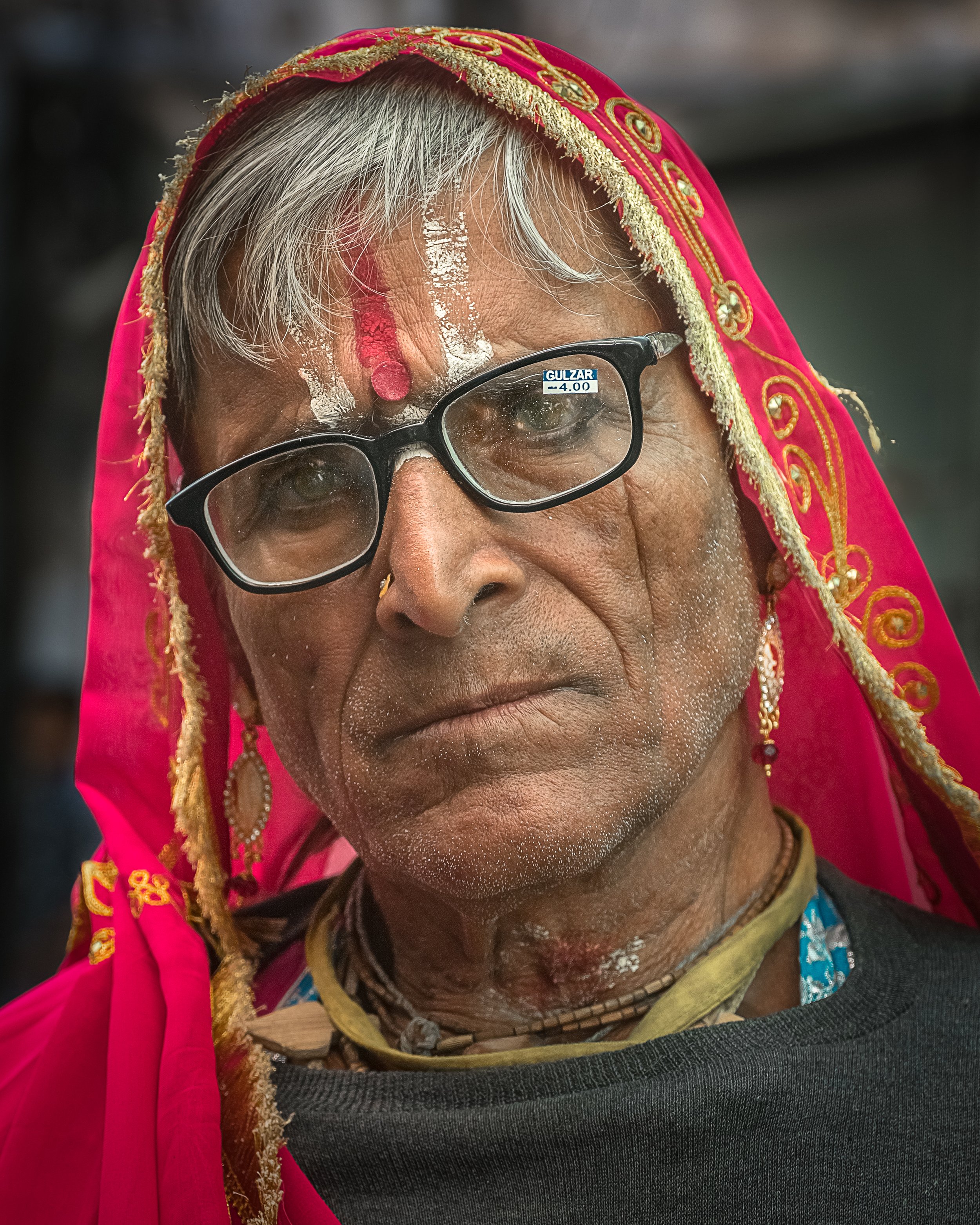
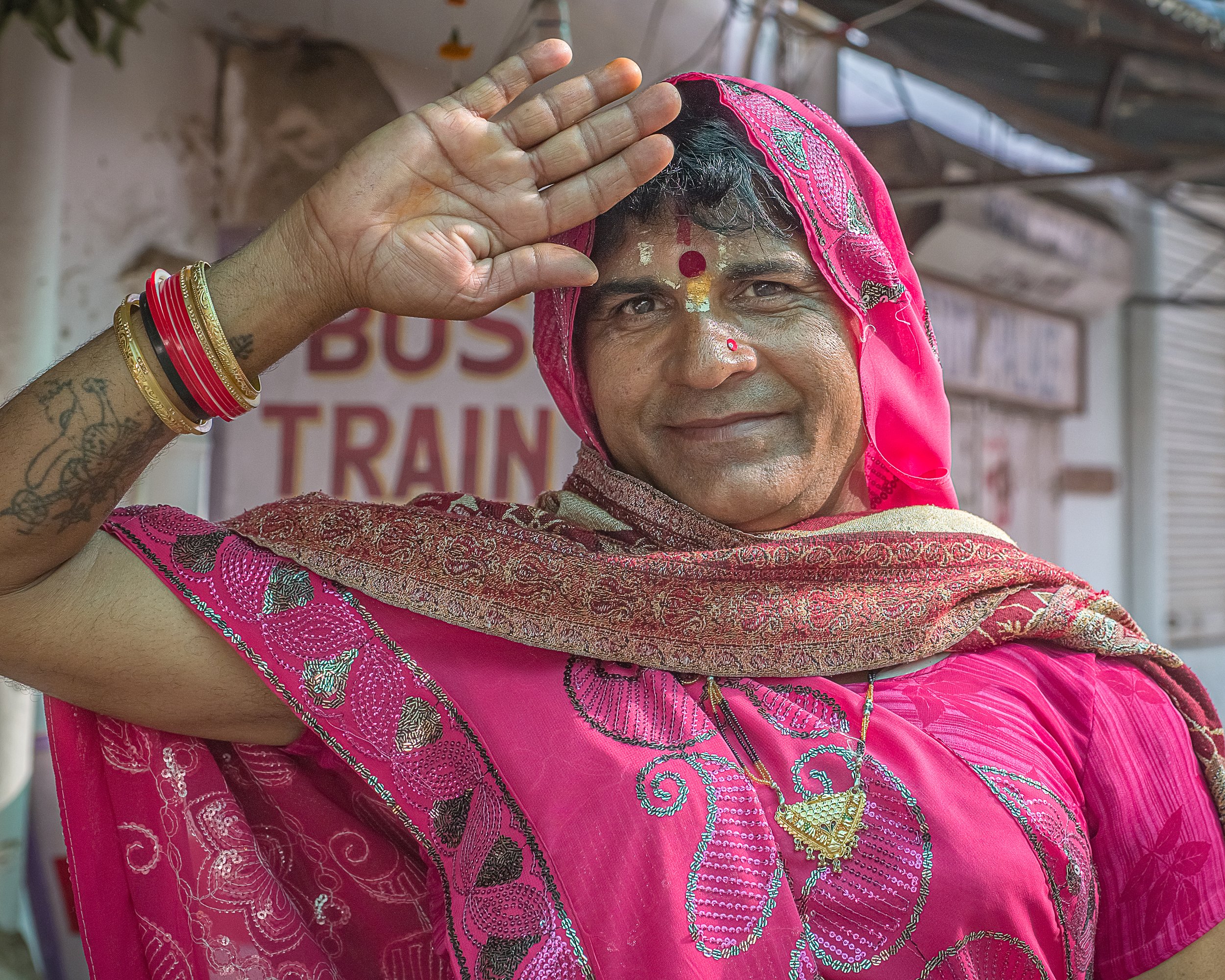
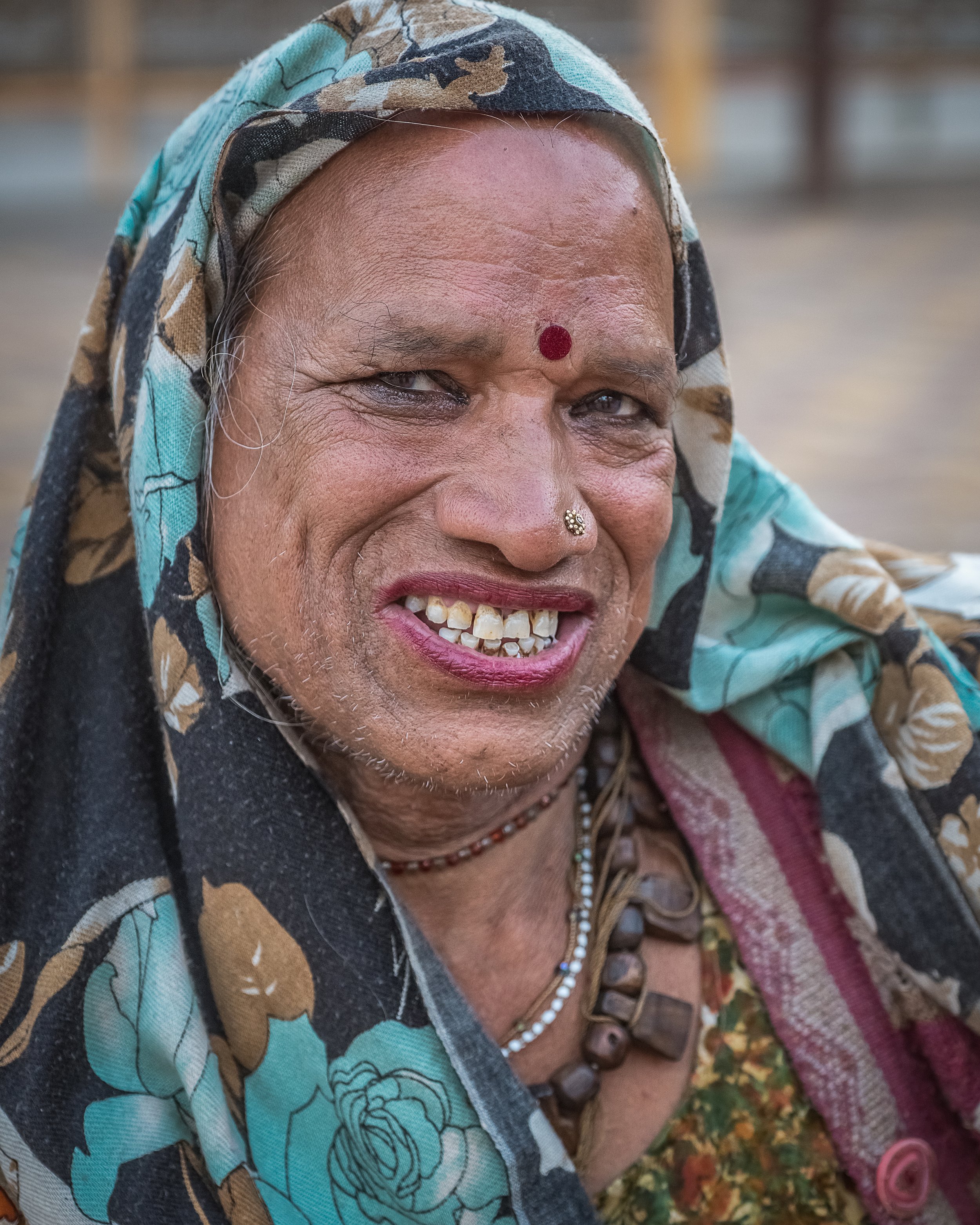
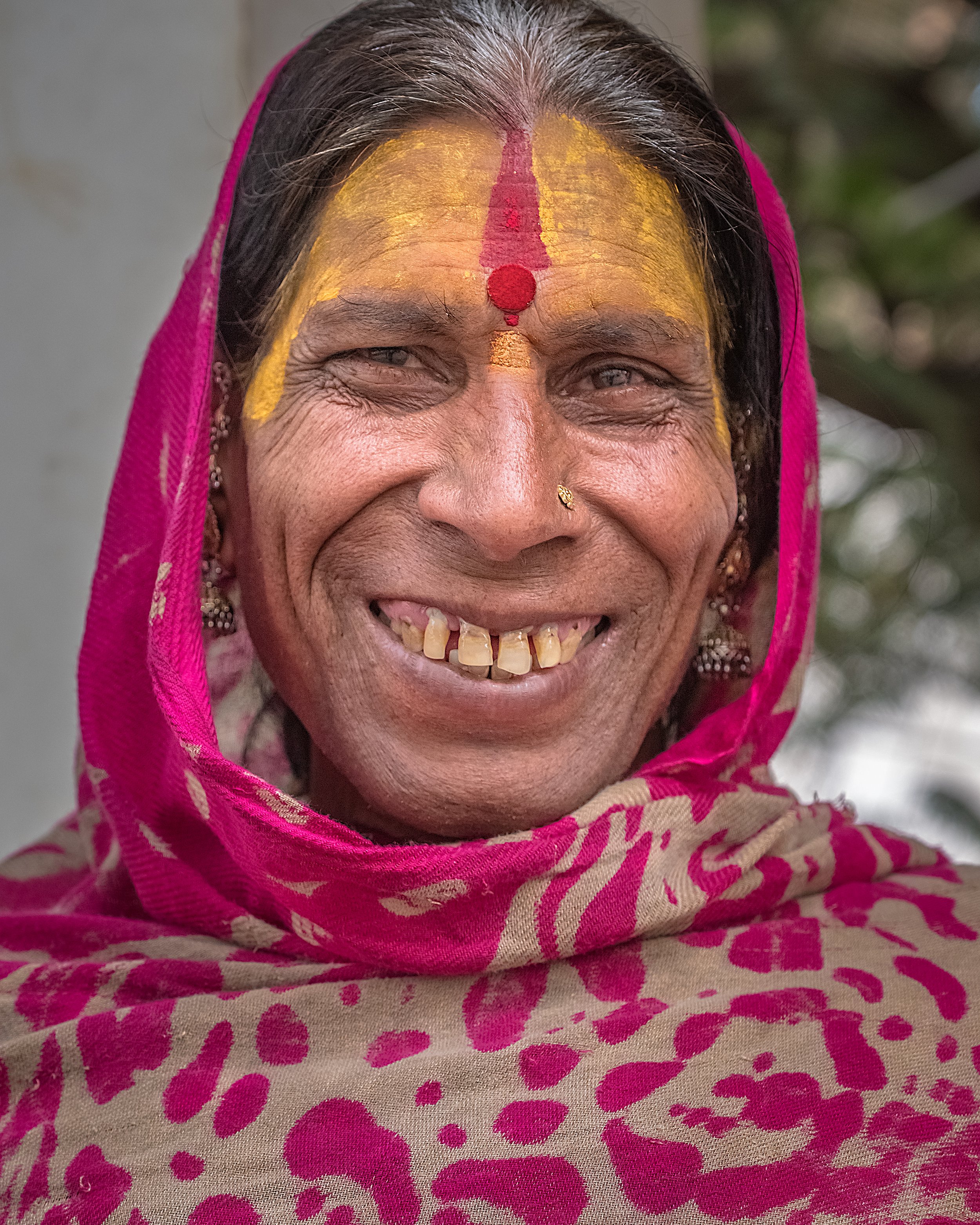
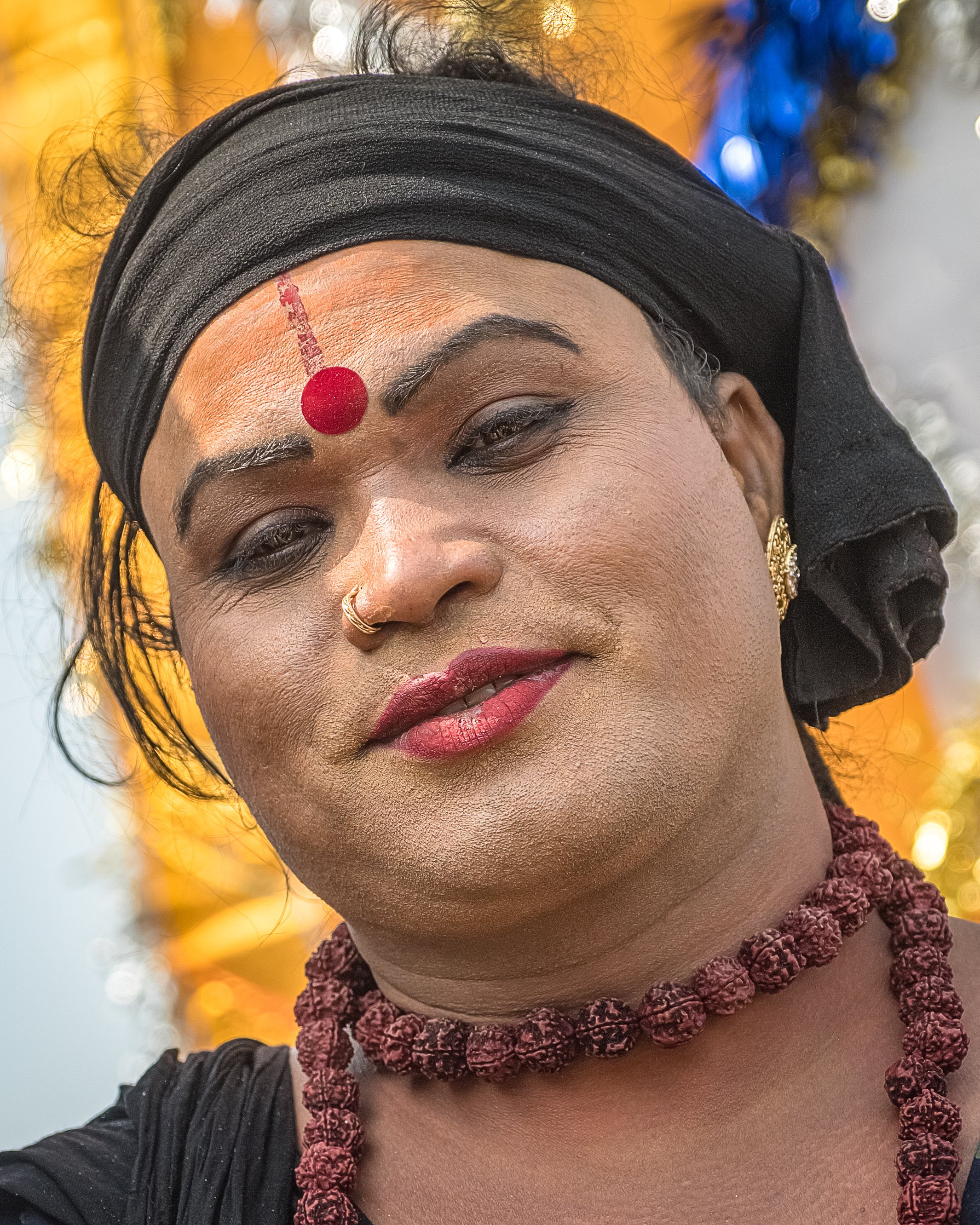
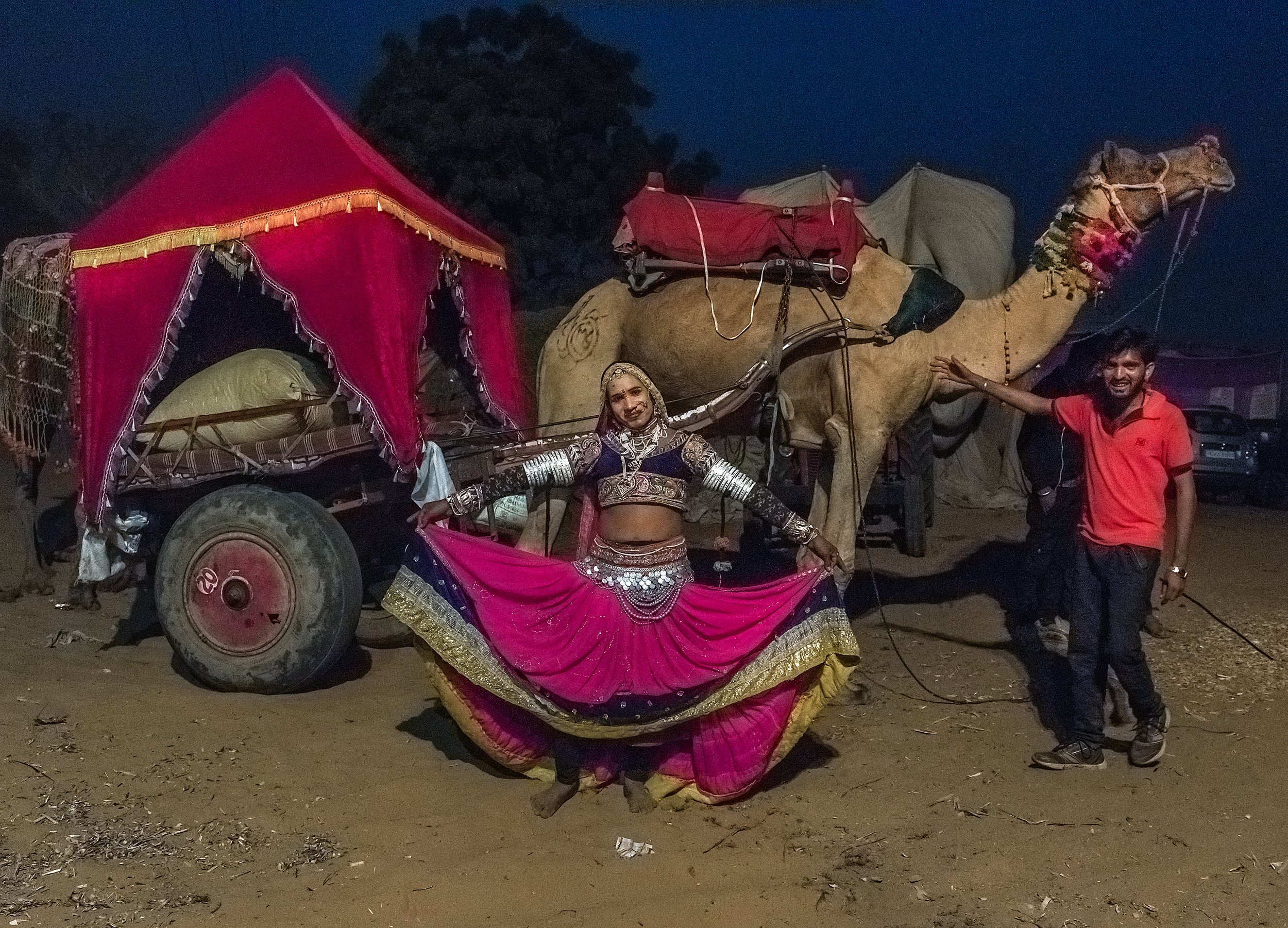
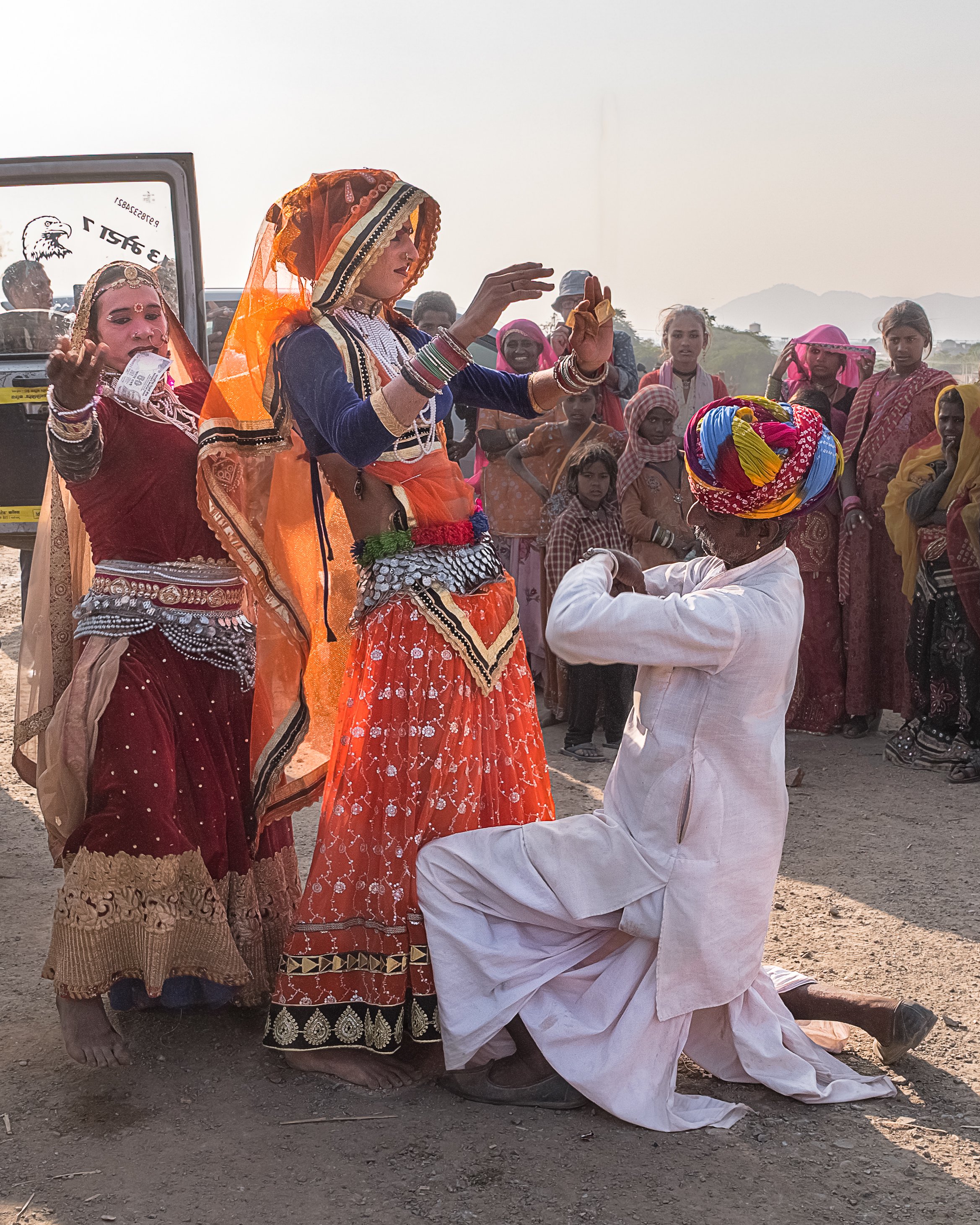
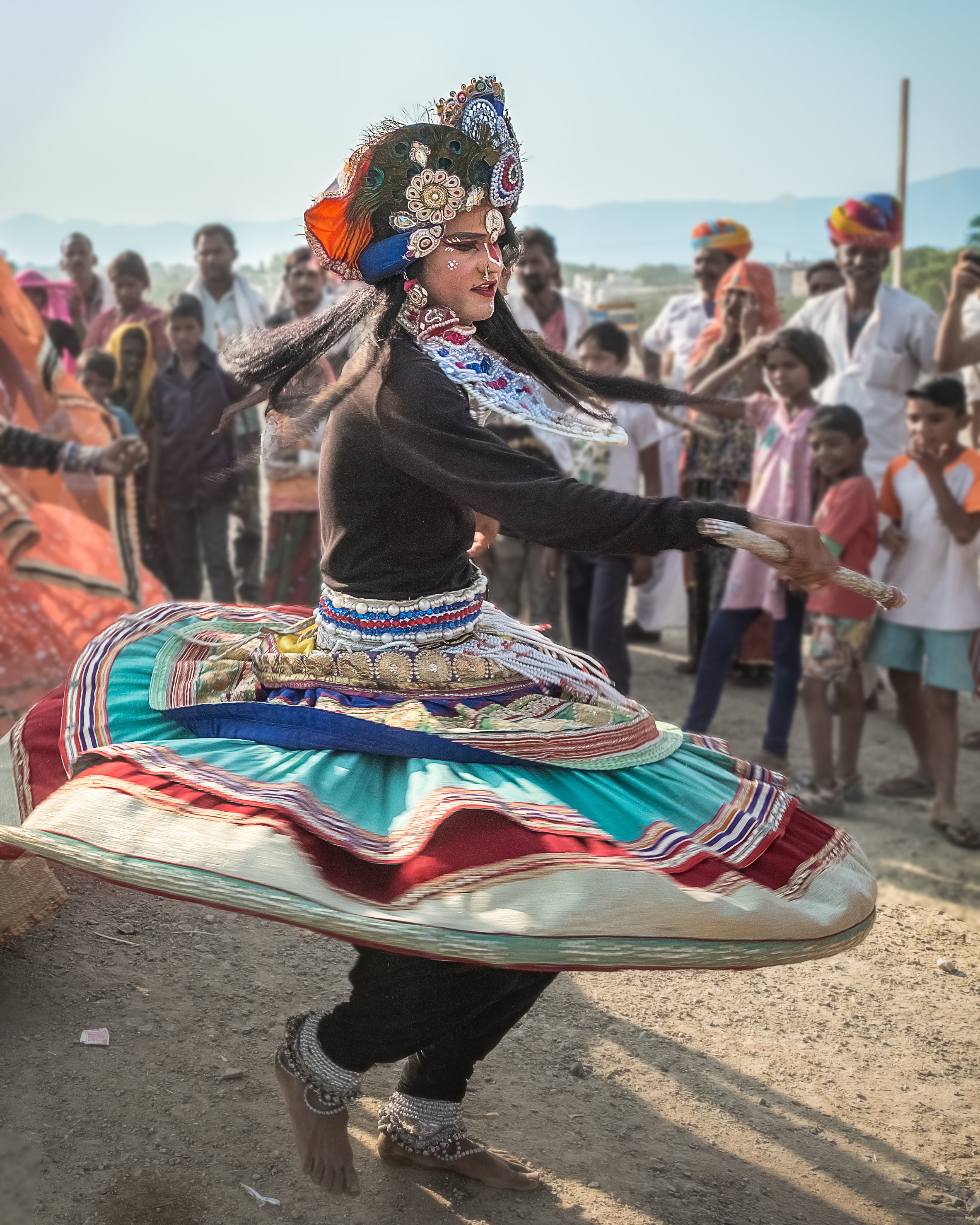

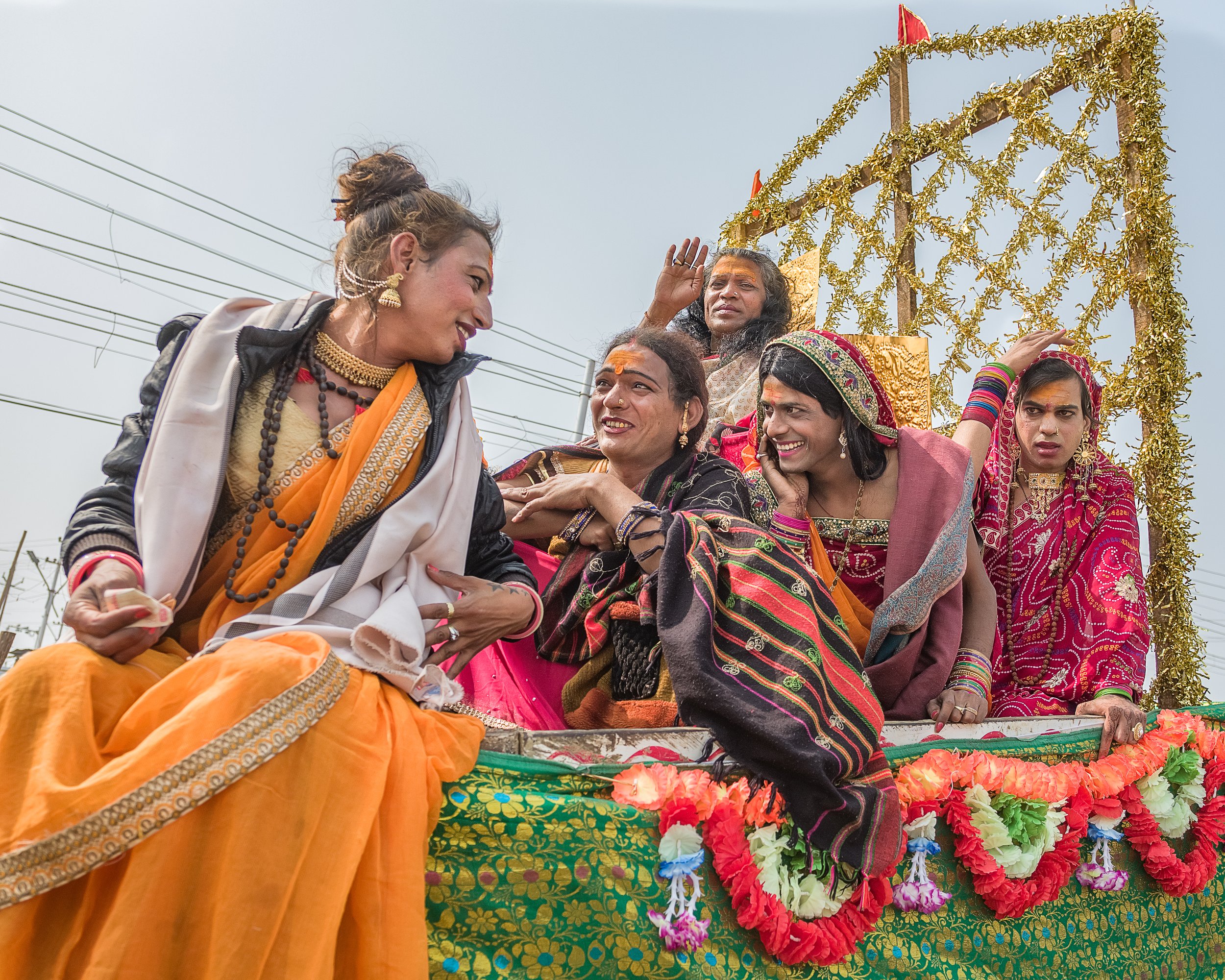

During the British colonization of India, the fluidity of gender was repressed, transgender practices were outlawed, and they were forced underground. In recent years, the Hijra have regained some of the rights and freedoms that were formerly denied. In 2014 the Supreme Court acknowledged that third gender people are deserving of rights equal to other citizens. They are slowly assimilating into the fabric of Indian society and are now recognised as a third gender on passports and other official documents.
Additionally, there have been several events in the recent past which indicate a move to more inclusive sexual variance in society. In 2019 The Hijra were invited to take part in the Kumbh Mela in Prayagraj, one of the largest holy bathing festivals in India. They were led by Laxmi Narayan Tripathi, a well-known Bollywood actress and activist for transgender rights in India. When invited to speak at the Asia Pacific UN Assembly in 2008, she spoke of the plight of sexual minorities claiming that transgender people should be respected as humans and given equal rights. After centuries of ostracism, the Hijra community’s fight to be accepted by the Hindu establishment is slowly reaching fruition.
Carol Foote
Carol is based in Queensland Australia and has always been drawn to street photography, searching out the most colourful and quirky characters in her own environment. After studying documentary photography at college, she travelled to Yunnan, China to photograph the wide diversity of ethnic minorities in the region. However, over the past five years, her focus has shifted to Tibet, Nepal and India. As someone who has always been drawn to unique and different cultures, the regions rich heritage and local traditions make it a haven for her style of photography.
Follow Carol on social media @carolfoote_photographer
Check out more of Carol’s photography here
PHOTO ESSAY: Tibetan Worship and Culture at Lhasa’s Jokhang Temple
7 Caves, Temples and Cities Carved in Mountains
These ancient sites were once carved into the surrounding landscape and continue to stand today.
Created at a time when construction vehicles and advanced building tools did not exist, these caves, temples and cities demonstrate the craftsmanship of their ancient peoples all over the world.
1. Petra
Petra, Jordan
Petra, which is also known as “Rose city” for its pink-hued rock carvings, is located between the Red Sea and the Dead Sea in Jordan. The archaeological site is home to several rock-cut temples and tombs, including Al Khazneh, Al-Deir, the Palace Tomb and Urn Tomb. Today this carved site is both a UNESCO World Heritage Site and one of the New 7 Wonders of the World.
2. Longmen Grottoes
Luoyang, China
Longmen Grottoes. Dericafox. CC BY-NC-ND 2.0
Considered one of the best examples of Chinese Buddhist art, the Longmen Grottoes date back to the 5th century. The site contains more than 2,000 artificial caves and over 100,000 Buddhas carved into the limestone cliffs of the Xiangshan and Longmenshan mountains. The Longmen Grottoes cover an area of 30,000 square meters and the statues range in size (0.7 in- 53 ft). The site became a UNESCO site in 2000.
3. Ellora Caves
Maharashtra,India
Ellora Caves: Kailasanatha Temple. DdasedEn. CC BY-NC-ND 2.0
Stretching more than a mile long in distance, the Ellora cave temples date back to the 5th century. Located in Maharashtra, India the 34 caves are dedicated to Buddhism, Hinduism and Jainism. Designated a UNESCO World Heritage site in 1983, the Ellora Caves were hand carved into hillside rock.
4. Mesa Verde National Park
Montezuma, Colorado
Mesa Verde National Park. Usareisetipps. CC BY-SA 2.0
Within Colorado’s Mesa Verde National Park you’ll find the largest archeological preserve in the US. Located in Montezuma County and occupying 81 square miles, the more than 4,000 Pueblo Indian sites date back to the 6th century. As well as 600 cliff carved dwellings including the famous Cliff Palace and Long House. It is frequently visited by mountain lions, elk and bears as well as lizards and snakes which roam the National Park.
5. Goreme National Park
Nevşehir, Turkey
Sculpted by erosion, the Göreme National Park is in Cappadocia, Turkey and contains rock-hewn sanctuaries, houses, monasteries, churches and underground cities. These were inhabited and built in the 4th century, Neolithic pottery and tools found in Cappadocia attest to an early human presence in the region. Clay tablets recovered from the remains of an Assyrian merchant colony at Kanesh are among the oldest written documents discovered in Turkey.
6. Abu Simbel
Aswan, Egypt
An ancient temple complex, Abu Simbel was built by Egyptian King Ramses II to intimidate his enemies and seat himself amongst the gods. The 66-foot seated figures of Ramses are set against the recessed face of the cliff, two on either side of the entrance to the main temple. Carved around their feet are small figures representing Ramses’ children, his queen, Nefertari, and his mother, Muttuy. The temples were unknown to the outside world until their rediscovery in 1813 by the Swiss researcher Johann Ludwig Burckhardt.
7. Lycian Tombs
Anatolia, Turkey
The 4th century Lycian tombs of Turkey contain carved tombs into the side of the region’s mountains, demonstrating a form of ancestral worship. More than a thousand tombs are there today varying in many intricate styles. Some with Romanian columns and other decorative features. The Lycian people believed the dead were carried to the afterlife by winged creatures, hence helping the process by laying them to rest in high cliffside tombs.
Jennifer Sung
Jennifer is a Communications Studies graduate based in Los Angeles. She grew up traveling with her dad and that is where her love for travel stems from. You can find her serving the community at her church, Fearless LA or planning her next trip overseas. She hopes to be involved in international humanitarian work one day.
Child Slavery in Ghana
When Elizabeth Tulsky participated in NYU’s study abroad program in Ghana, she also independently volunteered with City of Refuge, a local organization that uses education as a tool to combat child slavery. She said of her experience that it had “a tremendous impact on my life and what I want to do in the future.”

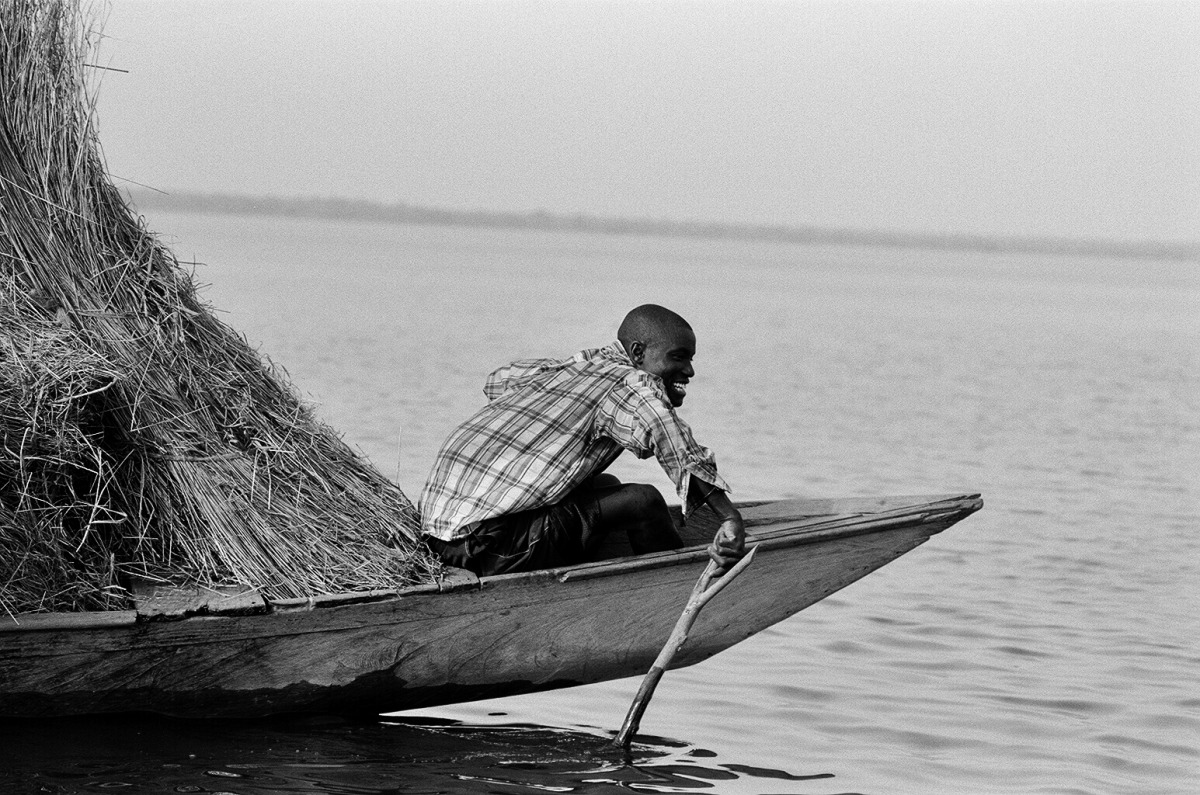




In Ghana, children are often enslaved, maltreated and many mothers struggle to see their children as more than a financial burden. While there are no statistics on the actual number of children trafficked, estimates are in the thousands. What is known is that 25% of Ghanaian children ages 5-14 years are involved in child labor. Child labor and human trafficking are both against the law in Ghana, however, laws are not enforced.
City of Refuge fights against child slavery by educating small villages about the harms of keeping children out of school and depriving them of a childhood. The organization is founded on the belief that if they can empower single mothers educationally and economically then they will no longer be vulnerable to selling their children as slaves.
Can you tell me a bit about City of Refuge and the work they do?
City of Refuge workers enter villages and open discussions with the chiefs in a respectful manner and work to free children who are in dangerous and/or miserable conditions and separated from their families. On a daily basis, City of Refuge provides home, happiness, and sanctuary to many rescued children. Furthermore, City of Refuge runs the only public school in the city, Doryumu. The organization works at the root of the problem, beginning with single mothers. Many children end up in slavery because mothers simply have absolutely no means of supporting themselves, much less their young children. Selling them, as hard as it may be to believe, truly seems like the only option for many women. Thus, City of Refuge works with single mothers to find alternative solutions to make ends meet, and have started two local businesses to be run by single mothers to increase opportunities for mothers and in turn, reduce the number of children sold into horrific situations.
How were you involved with the organization?
I worked in the small school where the children living with the City of Refuge family were educated and spent my evenings at the home playing with children and helping them with their homework. I also spent time shadowing the founders and through this I learned much about the process.
What do you know about child slavery in Ghana?
Children are targeted as slaves for fishermen for several reasons. First, children are easy to acquire as so many parents are impoverished and feel financially helpless. Second, children’s small hands are ideal for making and untangling fishing nets. When the nets get trapped in trees in the lake, children are sent in the water to untangle them. Unfortunately, this means many of the child slaves are incredibly susceptible to water-borne disease and illness and sadly, some do not know how to swim and may drown in the water. Children who are enslaved receive no form of education or care and spend up to eighteen hours a day working on the lake. They are often fed no more than one meal a day, which frequently consists of just gari, a food made from cassava, soaked in the lake water.
Any advice for travelers going to Ghana?
This is probably true for every country, but just approach everything with an open mind, try new things, immerse yourself in the culture as much as possible.
How can readers help the victims of Child Slavery in Ghana?
Check out City of Refuge for more information.
Other organizations doing good work include Youth Generation Against Poverty (YGAP), an organization that inspires volunteers through creative fundraising opportunities. They have created several projects partnered with City of Refuge.
Elizabeth Tulsky
Elizabeth studied social work at NYU and has experience working with trauma, grief, family issues, depression, anxiety, ADHD, and general life transitions. She hopes to use her work to create culturally responsive, affirming and inclusive healing spaces while promoting the use of person-centered, strengths-based, trauma-informed, anti-racist and social-justice frameworks.
The Louvre Museum in Paris. BY-NC-SA 2.0
8 Museums from Around the World to Visit Virtually from Home
The coronavirus pandemic has seen many facets of daily life change. Many are working or taking classes from home, limiting their contact with the outside world, and finding new methods to ward off the fear of missing out on travel. With no clear end in sight, the trend of virtual living, working and playing is likely to carry on into next year.
In recognizing this unique opportunity, many museums around the world have opened up their collections to be viewed online for free. With exhibits ranging from science to rare art to historical demonstrations, there truly is something for everyone to enjoy. Below is a guide to eight museums whose exhibitions are available to be viewed from home.
1. Prado Museum — Madrid, Spain
Wenji Zhang. CC BY 2.0.
The Prado Museum is Spain’s most important art museum and is world-renowned for its extensive collections of European and Spanish artwork. The museum’s collection is home to approximately 8,200 drawings, 7,600 paintings, 4,800 prints and 1,000 sculptures, and features the work of artists like Diego Velazquez, Francisco de Goya and El Greco.
According to Miguel Falomir, director of the Prado Museum, “Since its foundation in 1819, the Museo del Prado has played a key role in the evolution of art history. It has been crucial for the rediscovery of the Spanish Primitives and emblematic figures such as El Greco, and for positioning Velazquez as the greatest figure in the Spanish pictorial Parnassus, while its galleries have inspired some of the most avant-garde painters of the past 150 years. We are proud to show visitors this great artistic patrimony.”
The online collection, which is available here, showcases over 10,000 works of art. Additionally, the museum’s Instagram account, @museoprado, uploads daily mini-tours of different pieces which discuss their history and meaning.
2. National Museum of African American History and Culture — Washington, D.C.
Ron Cogswell. CC BY 2.0.
The newest addition to the Smithsonian Institution’s National Mall campus, the National Museum of African American History and Culture is the sole national museum in the United States dedicated to documenting African American life, culture and history. The museum was widely popular when it opened in 2016, and has only continued to gain prominence with the resurgence of the Black Lives Matter movement.
The museum offers a number of virtual exhibitions and resources, including permanent and past special exhibition galleries, publications for further research into African American history, and a “Curator Chats” series which features museum curators providing information on the museum and various upcoming projects.
3. Georgia O'Keeffe Museum — Santa Fe, New Mexico
Kent Kanouse. CC BY-NC 2.0.
The Georgia O’Keeffe Museum is a small gallery located in New Mexico’s capital city which is dedicated to the life and work of Georgia O’Keeffe, one of the most influential American modernist painters. Since its opening in 1997, the museum’s collections have grown to house nearly 1,200 pieces of the late artist in its Santa Fe gallery and in the Abiquiu Home and Studio, where O’Keeffe resided and created many of her most popular pieces.
While the museum has since reopened with a limited capacity for visitors, art lovers across the globe can still enjoy the museum’s virtual collections, which include digital versions of her art, various online programs and creative activities to create art at home inspired by O’Keeffe’s legacy.
4. Kahlo Museum — Mexico City, Mexico
Kyle Magnuson. CC BY 2.0.
Located inside Frida Kahlo’s lifelong home, the Frida Kahlo Museum features a number of the artist’s paintings, as well as her home studio and garden. The site is famous for its vibrant blue walls which have given the building the nickname “La Casa Azul,” or “the Blue House.”
Hilda Trujillo, one of the museum’s curators, stated that: “As one explores Frida Kahlo’s work more deeply and enjoys the privilege of getting to know her home, one begins to discover the intense interrelations between Frida, her work and her house. Her creative universe is to be found in the Blue House, the place where she was born and where she died.”
Via Google Arts & Culture, visitors to the museum’s virtual gallery can view the “Appearances Can Be Deceiving” exhibit, a number of photos and paintings, and immersive virtual viewings of four rooms within the museum.
5. Emperor Qinshihuang’s Mausoleum Site Museum — Xi’an, China
Larry Koester. CC BY 2.0.
One of the most famous archaeological sites in the world, the Emperor Qinshihuang’s Mausoleum Site Museum is home to the terra-cotta army, a collection of several thousand sculptures depicting the army of Qin Shi Huang, China’s first emperor. All of these sculptures surround the emperor’s mausoleum in formations meant to guard the site from invaders.
The site in Xi’an was discovered by local farmers in 1974, and numerous excavations have uncovered more than 8,000 individual sculptures buried in the site.
The museum offers a broad online collection with a number of selections. Likewise, the virtual experience allows viewers to learn more about the history of the terra-cotta army, as well as detailed information on individual sculptures.
6. National Gallery of Victoria — Melbourne, Australia
State Library Victoria Collection. CC BY-NC 2.0.
The National Gallery of Victoria is the oldest and largest art museum in Australia. Featuring thousands of pieces of Australian Indigenous art, Asian art and international art, the museum has grown to become the most visited art museum in the country.
The museum offers an extensive list of virtual experiences which will keep any stuck-at-home art lover captivated for days. Digital tours like “20th Century Australian Art,” “Japanese Modernism” and “Marking Time: Indigenous Art from the NGV,” short documentary films, explanatory articles, podcasts and the museum’s bimonthly magazine are all available for free on the museum’s website.
7. National Museum — New Delhi, India
Tom Thai. CC BY 2.0.
The National Museum in New Delhi is one of the most prominent art institutions in India. Inaugurated in 1949, the museum’s collections have grown to house over 2 million diverse pieces of Indian and foreign artwork which represent over 5,000 years of Indian cultural history. The museum has also become known as a center for art history and cultural research in recent years.
The museum’s online collection, which is available via Google Arts & Culture, showcases hundreds of pieces from the institution and features seven 360-degree room viewings.
8. Galileo Museum — Florence, Italy
Elias Rovielo. CC BY-NC-SA 2.0.
Dedicated to highlighting the contributions from scientist and astronomer Galileo Galilei, the Galileo Museum is one of the most popular science museums in the world. The museum’s collection includes a number of scientific instruments dating back to the 13th century, including Galileo’s telescope which was used to discover the existence of Jupiter. Curators at the museum also undertake a number of research projects and activities, including the publication of several research journals and catalogs.
Visitors to the virtual exhibition are able to view a number of the museum’s rooms and pieces via in-depth videos ranging from rooms dedicated to astronomy and physics to an interactive space titled “Galileo and the Measurement of Time.”
Jacob Sutherland
Jacob is a recent graduate from the University of California San Diego where he majored in Political Science and minored in Spanish Language Studies. He previously served as the News Editor for The UCSD Guardian, and hopes to shed light on social justice issues in his work.
10 National Parks to Visit Outside the US
While most people associate National Parks with the US, there are amazing National Parks to visit around the world. Check out glaciers, tropical wetlands, the oldest desert in the world in these parks in Iceland, Namibia, Thailand, India and more.
Read MoreInside the Lives of the American Amish
The Amish are known for their conservative beliefs and rejection of modern technology. Today, more than 300,000 Amish live in the United States.
Teen Returning Home From Work. Melnee Benfield. CC BY-NC-SA 2.0
The Amish Church originated in Europe in the seventeenth century following a split from the Mennonite Swiss Brethren in 1692. This split was due to a disagreement about the treatment of members who had been found guilty in breaching the doctrine. To escape persecution, the Amish migrated to Pennsylvania in the 1730s. Today the population is an estimated 300,000 people in more than 30 states and is steadily growing due to the Amish belief that children are a blessing from God. The majority of the Amish community (62 percent) live in Pennsylvania, Ohio and Indiana. They are Christian believers who have isolated themselves from modern society and live in rural areas of the United States. They do this to keep their community from being influenced by outsiders, who they refer to as the “English.”
Family is the most important social unit in Amish culture. On average, families have seven children, although larger family units than this are common. Chores are divided traditionally by the gender binary, with girls staying and helping their mothers manage the home. If they decide to work outside the home, it is within the Amish community doing jobs like sewing, selling food in local stands or stores, waitressing, midwifing or nursing. Boys work alongside their father in farms, construction, crafting furniture, raising livestock and auctioneering. On days when they are not working, the Amish turn to sports like baseball, volleyball and basketball. Board games are also very popular among the Amish household, as well as fishing, hunting and being in community with friends and family.
The Amish generally eat foods produced in their own gardens or on their farms. As a rule, they do not eat processed, store-bought foods. Homegrown fruits and vegetables, eaten fresh, canned or frozen, play an important part of the Amish diet. Vegetables often found in their meals include peas, corn, zucchini, beets, beans and rhubarb. Meals are designed to sustain hardworking lifestyles. The women in the community are known to bake cakes, pies, cookies and bread. An Amish dessert favored by many is Shoofly pie, typically composed of flour, brown sugar, water, spices and egg. The pie is topped with crumbs and served in a flaky pie crust. Shoofly pie is similar to coffee cake, but with a gooey molasses bottom.
Kids of All Ages Playing Baseball. Bob Jagendorf. CC BY-NC 2.0
Education in the Amish community begins at the age of six (first grade) and culminates at 13 (eighth grade). Children are taught in a one-room schoolhouse, usually within walking distance of their home. The classroom is composed of 30-35 children, many of which are siblings or cousins. The day begins with Bible reading, hymn singing and reciting the Lord’s Prayer. At the end of the morning routine, the basics are taught: writing, math, history, arithmetic and English. The students’ first language is Amish German dialect, then English is learned at school. The teacher or teacher’s aide will circulate the room teaching individual grades while the other grades read or prepare for their time of teaching. Higher education is discouraged, as it could lead to leaving the Amish community and influencing others to do the same. Amish children are exempt from state compulsory attendance beyond the eighth grade based on religious principles.
The Amish reject modern technology as it can open the door to temptations and change their traditional lifestyle. Instead, they choose to live simple lives and are self-sufficient. The Amish farm and produce everything they own and ride a horse and buggy or a bike to travel around the community. However, there is a time when Amish youth can decide whether or not they would like to continue living within the community. This is a season where rumspringa, a German term for running around, takes place. At the age of 16, parents allow the teens to fully experiment with the outside world and activities, which would otherwise be condemned and result in shunning. Due to the fact that individuals aren’t baptized, teens are not yet under the church authority. This is part of the reason why they are given a pass. This experience lasts two years and 90 percent of teens return home.
Amish Family on a Horse and Buggy. Brucedetorres. CC BY-PDM 1.0
After arriving more than three centuries ago, the Amish have sustained a private life from the outside world. Not allowing many into their community has resulted in the preservation of their beliefs and isolation. The Amish continue to live in the US with two new recent settlements, Argentina and Bolivia.
Jennifer Sung
Jennifer is a Communications Studies graduate based in Los Angeles. She grew up traveling with her dad and that is where her love for travel stems from. You can find her serving the community at her church, Fearless LA or planning her next trip overseas. She hopes to be involved in international humanitarian work one day.
10 Miles From Their Past: Za’atari Syrian Refugee Camp in Jordan
Jordan opened the Za'atari refugee camp in 2012, which has now gradually turned into a permanent settlement. Za’atari is home to an estimated 80,000 refugees, more than half of which are children.
Less than 10 miles from the Syrian border sits the Za’atari refugee camp in Jordan’s desert. A camp that began as a collection of tents has now become an urban settlement with thousands of portacabins. At its peak, Za’atari hosted 150,000 refugees, today the camp hosts 80,000. For many it’s the closest thing to home, however many still struggle to find work to make a steady income.
Syrian Refugee Learning To Sew. UN Women Gallery. CC BY-NC-ND 2.0
The Za’atari refugee camp has all of the components that make up a city, including 32 schools, 58 community centers and eight medical clinics. Despite all of this aid, there are still insufficient resources for the influx of refugees housed there. Less than a fifth of the population has current work permits. Many men work illegally to support their families. Many women are excluded from employment and have to fight against social norms that call for them to stay home. However, the camp has provided classes geared towards women to teach them basic skills to help them earn an income. The benefits of these classes is to restore routine in their lives, fight off cultural norms and aid in their mental healing. It also helps them regain purpose and become self-sufficient.
Children make up 58% of the population in Za’atari and an estimated 22,000 children are enrolled in school. They attend makeshift classes, but organizations are calling for an increase in financial aid. There is a need for more trained teachers and improved safety measures to facilitate the children’s access to class. Many girls face harassment and abuse as they walk to classes or as they walk back home. In addition, there’s a lack of resources for the children that need extra support in learning the material. The civil war has impacted where the children stand against their global peers in regards to education. Half of Syrian middle school-aged children are unable to read at a second-grade level and an average of 59% of middle school students could not do a second-grade math problem. In addition, only 1% of youth pursue higher education due to difficulty in obtaining transcripts, unfamiliar entrance exams, a language barrier and lack of funds.
The trauma experienced by both adults and children from the war and subsequently the resettlement process into another country, has led to a serious impact on the mental health of refugees. More than three-quarters of Syrian refugees have mental health symptoms. The violence, killings of loved ones and peers, destruction and frequent fear for their lives has caused PTSD, depression and anxiety, as well as intellectual and cognitive difficulties. To escalate the situation, there’s a stigma towards individuals with mental illness in Middle Eastern countries. Therefore, not many express the difficulties they face and the trauma they have experienced. The Za’atari camp offers mental health aid to the individuals and guides them towards healing so they are able to lead productive and mentally stable lives in the future.
The cost of keeping the 530-hectare camp operating every single day costs $500,000. Each person in the family (regardless of age) receives JOD 23 ($32) a month to cover food expenses. The money can be used in the two contracted supermarkets (Safeway and Tazweed) located in the camp or the four bread selling points. This allows the camp refugees to choose from a variety of produce to feed their families, bringing a sense of normalcy. Moreover, each family also receives 35 liters of water a day used for cleaning, drinking, eating and flushing the toilet. The water is filtered and chlorinated to meet the standards of tap water across Jordan. Water is brought in by dozens of tanker trucks or pumped from desert boreholes that directly feed water to the porta cabins. Electricity is provided through the solar power plant in Za’atari and has eased families' living conditions in the camp. It has improved their safety and security while facilitating food storage and allowing children longer hours to do their homework. The plant has helped save $5 million per year in electricity bills.
The Za’atari camp is a safe place where many aid workers and volunteers live. However, many forms of crime still exist: theft, violence, smuggling. Crime erupts as people are frustrated with their living situation and the limited resources available to them. There is little formal employment available within the camp. This results in refugees selling personal items, supplies received from organizations and, at times, prostitution. A young refugee girl said that she sells her body to support her family back home during the war. She makes, on average, $70 a day and although she fears persecution by Jordanian authorities, she explains that it’s her only way to help her family. Prostitution in Jordan is illegal and punishable. If foreign women and men are found guilty, they can be deported. Desperate families will at times sell their young daughters and forcefully marry them to men in the refugee camp.
The camp will continue to host and support refugees through education, livelihood opportunities and work permits. This will alleviate the trauma and circumstances lived by many Syrians. The Za’atari leaders hope to return a sense of dignity to the refugees and bring opportunity to the camp inhabitants with the resources provided.
To Get Involved
UNHCR helps provide aid to Syrian refugees who have fled. They provide shelter kits and non-food items as well as protection services and psychosocial support to those who remain in Syria.
To learn more about UNHCR click here.
To support the Syrian refugees through UNHCR click here.
RELATED CONTENT:
PODCAST: Exploring Jordan with Yulia Denisyuk
Jennifer Sung
Jennifer is a Communications Studies graduate based in Los Angeles. She grew up traveling with her dad and that is where her love for travel stems from. You can find her serving the community at her church, Fearless LA or planning her next trip overseas. She hopes to be involved in international humanitarian work one day.
Living in Fear of Persecution as an Albino in Africa
There are many challenges for the Albino Community in Africa including discrimination, social exclusion and neglect.
Albino Child Getting His Vision Checked. IAPB/VISION 2020. CC BY-NC-SA 2.0
Albinism is a genetic disorder resulting in decreased production of a pigment called melanin. It affects the skin, hair and eyes, resulting in light color or no color. One in 1000 Africans have albinism, while in the United States it affects one in 20,000 Americans. People with this genetic disorder have been discriminated against and persecuted in Africa. Children with albinism are sought after for their limbs because witch doctors believe their bodies harness magical powers. Due to the extreme measures witch doctors use to attain children and adults, people with the genetic disorder (albinism) are sent to protection centers.
School Boy with Albinism. ViktorDobai. CC BY-NC 2.0
More than half of the African population believe in witchcraft. Families with children or members who have albinism are oftentimes frowned upon and members of the community believe that albinism is a result of being cursed. Many women are rejected by their partners after giving birth, husbands believing their wives had affairs with white men. Oftentimes, families don’t want to be associated with those superstitions and abandon their children. The rejection continues in school. Children face teasing and discrimination by their peers, and this affects the development of positive self identity. Research has shown that teachers and school administrators lack the specific educational needs and resources for children with albinism. The absence of support and care, drives up rates of truancy among these children. Adults face descrimination as well, especially for individuals living in rural areas where superstitions are heightened. Due to poverty and the need for education, many with the genetic disorder are illiterate and are forced into menial jobs, exposing them to the sun and skin cancer. Those who manage to finish school face discrimination in the work place and are rarely considered for promotions.
Teenage Girl Learning to Type. Alex Wynter. CC BY-NC-SA 2.0
Albino children and adults live in constant fear of being assaulted, kidnapped, murdered or having their limbs cut off. Witch doctors are common in Africa and believe that albino limbs mixed with magical potions are powerful. This belief is prevalent among many rural communities, even in politicians looking to win prospective elections. Witch doctors convince clients that bones and other organs of people with albinism will bring wealth, success and love to their lives. With this belief, clients pay up to $75,000 USD for an albino corpse while limbs can sell for $2,000 USD. For albino women, rape is prevelant. Women and girls are assaulted in the belief that intercourse with them can cure diseases, including AIDS.
As a result of these attacks, protection centers and boarding schools have been created for the safety of albino children. For example, the Buhangija Centre in Shinyanga, Tanzania. The center houses more than 300 children and protects them with guards who stand in front of the gates 24 hours a day. Only families and people who have been given government authority can enter the premises. The school provides an education, dormitory and meals free of charge. Although they provide safety and isolation for the children, the school headmaster Silliman Shabali Cabanya acknowledges this is not a long term solution. He believes society needs to be accepting and allow people with albinism to lead normal lives alongside other members of the community. He says, “keeping them hidden behind high walls and barbed wire is damaging for their development and long term psychological health.”
Young Man Protecting Himself From The Sun. Alex Wynter. CC BY-NC-SA 2.0
Lack of resources are the driving force in the preventable deaths witnessed yearly. Nine out of 10 people with albinism die between the ages of 30-40 due to skin cancer and the absence of sunscreen, hats, sunglasses and eyeglasses. The sun is extremely harmful to their skin and many don’t wear sunscreen because of its high cost. A sunscreen bottle can cost $14 - $19 USD depending on the African nation, about a sixth of the average monthly income in Senegal. In Zambia, medicine can be imported without being taxed, but sunscreen is considered a luxury cosmetic. It remains expensive and subject to tax, says John Chiti, executive director of the Albino Foundation of Zambia. There are some people, like 13 year old Chisha, who didn’t know what sunscreen was until he was admitted to the hospital for skin cancer. Currently, there is no policy that urges the government to produce or distribute sunscreen to people living with albinism. For those who can’t afford it, current solutions include wearing long sleeve shirts and trying to stay indoors as much as possible.
With so many attacks and discrimination taking place against the albino community in Africa, a significant milestone took place last month. Malawi Parliament welcomed the country’s first albino lawmaker, Overstone Kondowe, telling the press, “the victory is a clear demonstration that people are changing their attitudes.” Kondowe will be the first lawmaker to fund a national action plan on albinism.
To Get Involved:
Beyond Suncare is an organization that creates sunscreen for the albino community in Africa and distributes it to rural areas. They help educate and bring awareness to this genetic condition while employing 30 percent of local staff with albinism. To learn more about Beyond Suncare click here.
To support the albino community in Africa click here
Jennifer Sung
Jennifer is a Communications Studies graduate based in Los Angeles. She grew up traveling with her dad and that is where her love for travel stems from. You can find her serving the community at her church, Fearless LA or planning her next trip overseas. She hopes to be involved in international humanitarian work one day.
Where to Travel in 2022
Check out these 20 destinations to consider for your 2022 travel plans. From the Rainbow Mountains of Peru to the Northern Lights of Norway, you will find adventure and more visiting these CATALYST picks.
Read MoreSouth India on Foot: Breaking Stereotypes One Step At a Time
We all have images in our minds about faraway places and the people that occupy them. Whether accurate or not, these ideas are often put in our heads by the news we consume, school textbooks or social media.
Dawn Lwakila exploring bush-trails in India’s rural Tamil Nadu
I’m one of those folks who likes to go and see for herself. I’ve spent the past 30 years living and traveling across four continents. My roots are in northern Canada—Yukon to be exact. Many would think this to be the absolute opposite in every way from my current home in the big bustling city of Chennai, the capital of India’s southern state, Tamil Nadu. Fortunately, I live on the outskirts of the city which enables me to get into the countryside fairly quickly. I believe it is my small-town roots that have allowed me to feel comfortable and at home in rural settings here in India.
Ganesh temple in Tamil Nadu’s Chengalpattu District.
I love wandering the dreamy hills of Munnar, Kerala.
I’m a wanderer at heart, and I am happiest walking from village to village, hilltop to hilltop. Some days I only walk 15km and other days I may walk more than 40km. I take backroads and bush trails, all the while documenting what I find beautiful with a few photos and videos, posted almost daily on my Instagram. Photography is a wonderful form of storytelling and the tale that I aim to tell isn’t often heard. I have been warned countless times not to walk alone in India. From mainstream media, I have been inundated with images representing India as a place of filth, overcrowding and crime. This has not been my experience.
Mambakkam Lake, Tamil Nadu. I love to leave my house while it’s still dark so that I can reach these magnificent locations at sunrise.
My secret swimming hole.
Over the past several years I have walked through much of South India exploring my home-state of Tamil Nadu as well as Kerala, Karnataka and Andhra Pradesh. There has not been a single incident where I felt threatened or unsafe. Rather, I have been greeted with nothing but kindness and hospitality. I have walked through bustling cities, endless kilometers of road and countless areas of pristine natural beauty, enjoying the entire place all to myself.
Following back-roads in Chengalpattu, Tamil Nadu.
Golden buffalo babies at sunrise.
I choose to go to locations that are off the beaten path. I search Google Maps for interesting features in the landscape and simply go check it out. One of my favorite things to do is follow small backroads from village to village. I cut through farmland and learn when each of the crops is planted and harvested. I find wondrously forgotten temples, tucked away in forests or on hilltops, unvisited except by a few folks from nearby settlements. I prefer to see life slowed down and simplified. For me, rural India offers the most incredible scenery where I am always bound to meet kind-hearted people who offer me smiles, refreshments and places to rest my tired feet.
Misty morning, cutting through the forest at sunrise to find a hidden lake.
Enjoying the coast of Kerala after trekking the highlands.
I feel so grateful for the sense of pride in the beauty of South India my photography has sparked. Many people, especially in the cities of India, have their eyes fixed on international destinations. When they look at tourism in India they often head to large resort towns or famous national parks. There is a sense of surprise when people see my images and learn of places in their own backyards that rival these famous destinations. I have received both local and national media coverage, which boggles my mind, but I guess this is because I’m doing something that the majority of women are not doing and, with a fresh set of eyes, I’m showcasing humble locations that are largely overlooked.
The comment I get the most from people who have never visited India is, “This is not how I pictured India to be.” For me, this is the greatest compliment, as it means that people are reevaluating the impressions they have about this country that is so dear to my heart.
Muttukadu Backwaters at sunrise. This is an important nesting and feeding area for both local and migratory birds.
An old neglected temple in Kanchipuram District of Tamil Nadu.
I like to approach new places with the idea that I’m a simple student and that those around me have something of value to offer. Trying to absorb as much as I can, I chose to share through my photography what intrigues and inspires me. I look for a sense of belonging and what connects me to others. Over the years I have learned that despite the superficial things that mark our differences—language, religion, politics—there is much more that unites us as humans. Step by step I find that all my previous notions about a place are left behind, replaced by a much more balanced and authentic understanding.
Banyan tree. Andhra Pradesh.
Peaceful moments walking from village to village.
Nothing compares to making my way through a new place on foot. The world slows right down and all the little details come into view. Precious moments that could never be captured any other way have become my daily reality. I am grateful for this journey and my hope is that it will inspire others to get out there and explore in a way that allows them to feel intimately connected to the places they visit.
Feel free to stay up to date with my adventures. You can find me on Instagram @dawned_onme or on Youtube: Wander Woman.
Dawn Lwakila
Dawn continually takes the path less trodden, both figuratively and literally. She loves to really live in a place and grow some roots there — as well as a good wander and the freedom to explore. Canada is her homeland, but her heart and soul are scattered across the globe. She has journeyed through over 30 countries and still has an ever-growing bucket list of new places to experience. She is currently based out of Tamil Nadu India.
7 Stunning Caves Worth Exploring
Though caves often hold a fearsome reputation, they have a myriad of captivating natural features and intriguing histories.
Caves often get a bad reputation: cold, dark, damp and uninteresting, or even frightening. In reality, caves offer snapshots of history, unusual natural structures, and examples of remarkable biodiversity. There are thousands of caves on Earth, and even more that are yet to be discovered. Each cave is unique, with specific natural formations that cannot be found anywhere else. Here are seven incredible caves to add to your list of must-see sights.
1. Reed Flute Cave, China
Called “the Palace of Natural Art,” Reed Flute Cave is known for its impressive stone curtains and pillars. Reed Flute Cave is located just 3 miles from downtown Guilin, China, and has been an attraction for centuries. Seventy-seven inscriptions of poems and travel descriptions can be found around the cave, and the oldest dates back to 790 A.D., the era of the Tang dynasty. There are inscriptions from the Tang, Song, Yuan and Ming dynasties, written by monks, poets, scholars and tourists from all over China. Today, the cave is lit by many multicolored lights hidden in its natural cracks and crevices, which cast a bright rainbow glow around the dark space, giving cave visitors a surreal and breathtaking experience. The cave was forgotten for years until its rediscovery in 1940, when a group of Chinese refugees stumbled upon it while fleeing from Japanese forces. During World War II, the cave’s large chamber, called the “Crystal Palace of the Dragon King,” was used as a bomb shelter. The cave regained popularity after its rediscovery at the end of the war, and was officially opened to the public in 1962.
2. Waitomo Glowworm Caves, New Zealand
Visitors to the Waitomo Glowworm Caves will take a trip into the past by exploring a cave over 30 million years old. The cave, located in Waitomo on the North Island of New Zealand, is praised as one of New Zealand’s best natural attractions. It contains an underground river, towering rock formations, and thousands of shimmering glowworms. The Glowworm Caves have been an attraction for over 130 years. These limestone caves formed at the bottom of the ocean millions of years ago. Local Maori communities knew about the caves, but they were first explored in 1887 by Maori Chief Tane Tinorau and English surveyor Fred Mace. After discovering the natural beauty of the caves, Chief Tinorau opened the caves to tourists in 1889. Many of the guides for tours today are descendants of Chief Tinorau. Guides take visitors on walking tours through the caves, as well as boat tours through the glowworm grotto. These boat tours take visitors to the center of the grotto, where they can look up in awe at the luminescent glowworms covering the cave walls and ceiling.
3. Mendenhall Ice Caves, Alaska
Just 12 miles outside downtown Juneau lies Mendenhall Glacier, known as the “Glacier Behind the Town.” Inside the glacier are the Mendenhall ice caves, passageways formed by water flowing through the glacier. These caves vary in size from tiny openings visitors have to squeeze through to giant caverns. Mendenhall Glacier was first explored in 1794 by Joseph Whidbey, a member of the British Royal Navy serving on Capt. George Vancouver’s 1791-95 expedition of the Pacific Northwest coast. To visit the caves, travelers can hike through the Tongass National Forest and then across the glacier, or they can canoe across Mendenhall Lake to the glacier. Both options offer breathtaking views of the glacier and surrounding landscapes, and both are somewhat strenuous but well worth the effort. Inside the caves, visitors are immersed in the cool blue shades of light coming through the glacier and can explore ever-changing ice formations. The caves change as the ice melts, so each visit to the Mendenhall ice caves is unique. The presence of the caves is also inconsistent and typically seasonal, so visitors should be sure to check on the status of the caves before planning a trip.
4. Barton Creek Cave, Belize
To discover the wonders of Barton Creek Cave, visitors will have to board a canoe. Barton Creek Cave is located east of San Ignacio along the western edge of Belize. It is a wet cave because it has a cave river running through it, and paddling along this tranquil river is the only way to take in the cave’s majesty and history. It is the largest river cave in Belize and contains evidence of ancient Mayan culture. The cave is natural, but archaeologists have identified a number of areas they believe were purposefully modified by the Mayans to improve access to the cave. These modifications include natural formations of flowstone broken to allow access to a rimstone pool and holes drilled by Mayan tools, likely to serve as handholds or to attach climbing ropes. Ten ledges made by the Maya line the cave walls, where archaeologists have discovered thousands of pottery shards, most of which are from large jars called ollas, and a number of stone tools. These discoveries have helped archaeologists determine the use of the cave during Mayan times; it was likely the site of ritual activity and worship. The Maya regarded caves as sacred sites, and the artifacts found in Barton Creek Cave reflect this view. Tours through the cave offer visitors the opportunity to witness incredible natural formations and to learn how the ancient Mayans interacted with the cave.
5. Hang Son Doong, Vietnam
For travelers who want to explore a cave but worry about darkness and small spaces, Son Doong Cave in central Vietnam is the perfect place to visit. Son Doong has the largest cross section of any cave in the world, reaching over 5 miles long, 650 feet wide and 490 feet tall. In some areas, the limestone ceiling of the cave grew weak and collapsed, creating huge skylights and allowing areas of lush vegetation to grow inside the cave. It was formed millions of years ago by the Rao Thuong River eroding limestone. Son Doong Cave was initially discovered in 1990 by a local man named Ho Khanh, who stumbled upon the entrance while searching the area for food and timber. He then returned home and no further exploration of the cave occurred until Howard and Deb Limbert, members of the British Cave Research Association, heard Ho Khanh’s story and urged him to find the cave again. In 2008, he successfully rediscovered the cave, and a survey was conducted by Howard Limbert and a group of British cavers. The cave opened to the public in 2013. Visitors are sure to be impressed by the sheer size of the cave, as well as its natural formations, river and distinctive vegetation growth.
6. Puerto Princesa Underground River, Philippines
Located on Palawan, the westernmost island in the Philippines, Puerto Princesa Subterranean River National Park is home to old-growth forests, wildlife and an expansive limestone cave system. The Puerto Princesa Underground River, as it is commonly known, flows for over five miles through beautiful caverns and eventually meets the sea. Visitors can take underground river tours on paddleboats to see the stunning cave formations and limestone cliffs, as well as a variety of native animal species. There are records of the Puerto Princesa Underground River dating back to 1898, but it is believed to have been known to early inhabitants of the Philippines and investigated by foreign explorers prior to that time. The area was established as an official attraction in 1971, and the cave system is still being explored. In 2010, researchers discovered a large cave dome above the underground river, with more river channels and access to an even deeper cave. The Puerto Princesa Underground River offers an abundance of fascinating natural formations to explore.
7. Shell Grotto, England
Shell Grotto is one of England’s most mysterious sites, encompassing over 70 feet of tunnels under the seaside town of Margate. These caves were discovered by chance in 1835, when a man excavating his new land stumbled upon them. Sprawling mosaics made of mussel, oyster, whelk and cockle shells cover every wall of the tunnels. Historians are unsure of who built Shell Grotto, or why. Theories range from Shell Grotto being a place of worship to a simple display of extreme wealth to the meeting room of a secret society. The elaborate shell designs offer little explanation, displaying swirling patterns that can be interpreted as a number of different things. Shell Grotto is a tremendous work of art, and the questions surrounding its origin and purpose add a layer of intrigue that draws visitors from around the world.
Rachel Lynch
Rachel is a student at Sarah Lawrence College in Bronxville, NY currently taking a semester off. She plans to study Writing and Child Development. Rachel loves to travel and is inspired by the places she’s been and everywhere she wants to go. She hopes to educate people on social justice issues and the history and culture of travel destinations through her writing.
Spain’s Graffiti Phenomenon
Spain is known for the street art that decorates major cities and towns all over the country, with multiple Spanish street artists reaching global acclaim. The street art phenomenon is especially significant not only for the identity it gives to Spain, but also for its relation to contemporary culture and expression.
Graffiti in Alicante, Spain. Photo by Ralph (Ravi) Kayden.
Mural in Madrid, Spain. Photo by Nancy O'Connor.
When walking the streets of Valencia, Spain, nowhere is the graffiti more prolific than Barrio Carmen, the historic district of Valencia. Tall buildings along winding stone alleys are adorned with color: depicting abstract images, portraits, and scenery reminiscent to that of the artists of the Escuela de Bellas Artes. Property owners often commission artists to decorate the entrance to their buildings, establishing a connection to the culture of artistic exhibition that exists within the city. Valencia is just one home to the countless networks of street artists across Spain: graffiti peppers the streets and surfaces of major cities, villages, and neighborhoods alike across the nation.
In Barcelona and Madrid, the real graffiti phenomenon exists not in the streets, but underground: along the sides of metro cars. Given the costs of cleaning and repairing painted cars, this form of graffiti is revered as the most risky, and the most thrilling. Barcelona has begun to heighten its police presence in the metros to prevent vandalism, but this measure has only served to make the artists more crafty. Rappelling through vents, jumping fences, and running from the police have become commonplace in the laundry list of a street artist’s activities.
Saville Street, Saville, Spain. Photo by Look Up Look Down Photography.
The two principles that unite the diverse network of graffiti artists throughout Spain are anonymity and adventure. In this way, street art becomes an equalizing force for expression. Of the thousands of graffiti artists throughout Spain, there exists no single class or personal affiliation. From this anonymity arises solidarity; artists sometimes work in teams or paint in recognizable styles, but rarely is the actual identity of an artist public.
Regarding adventure, José Sánchez, an anthropological researcher at Pompeu Fabra University, describes that from graffiti, artists find both a sense of belonging as well as adrenaline. There is, then, a dual impetus: to create some sort of permanence through visual expression, but also for the rush of the moment: the danger of painting in precarious situations, or of attempting to evade vandalism charges from the police. Sánchez offers the notion that the street art phenomenon arises as a microcosm for a contemporary society entrenched in immediate gratification, tactile pleasures, and hedonism, which Sánchez identifies mostly as the impact of youth culture. This explanation, however, seems to only cover part of the multifaceted nature of graffiti and its specific mode of public speech.
Mahón, Menorca, Spain. Photo by JR Harris.
One prolific street artist from the Gijon region of Northern Spain, who goes by the moniker “Señor X,” has become widely known as “Spain’s Banksy,” in reference to the mysterious British graffiti artist who has gained significant global acclaim in recent decades. Señor X’s work is focused on social commentary: the vast majority of his murals are anti-capitalist and anti-establishment. Señor X’s dynamic portfolio represents just part of the larger body of street art created in protest.
Furthermore, the debate over graffiti as street art versus graffiti as vandalism is just one feature over the larger question of legitimate protest. Art and visual expression have long been means of protest: Picasso’s Guernica, one of the most renowned pieces in the Spanish canon was painted in response to the bombing of the civilians of Guernica, Spain during the Spanish Civil War. The murals of artists such as Señor X represent many of the same sentiments and involve similar artistic meticulousness, but are illegal, rather than revered. Nonetheless, street art remains an integral part of identity and expression within Spain, and furthers discussions as to the nature of protest and youth culture globally.
HALLIE GRIFFITHS
Hallie is an undergraduate at the University of Virginia studying Foreign Affairs and Spanish. After graduation, she hopes to apply her passion for travel and social action toward a career in intelligence and policy analysis. Outside of the classroom, she can be found, quite literally, outside: backpacking, rock climbing, or skiing with her friends.








